Global Perspectives
Multi-component sample – Stage 1
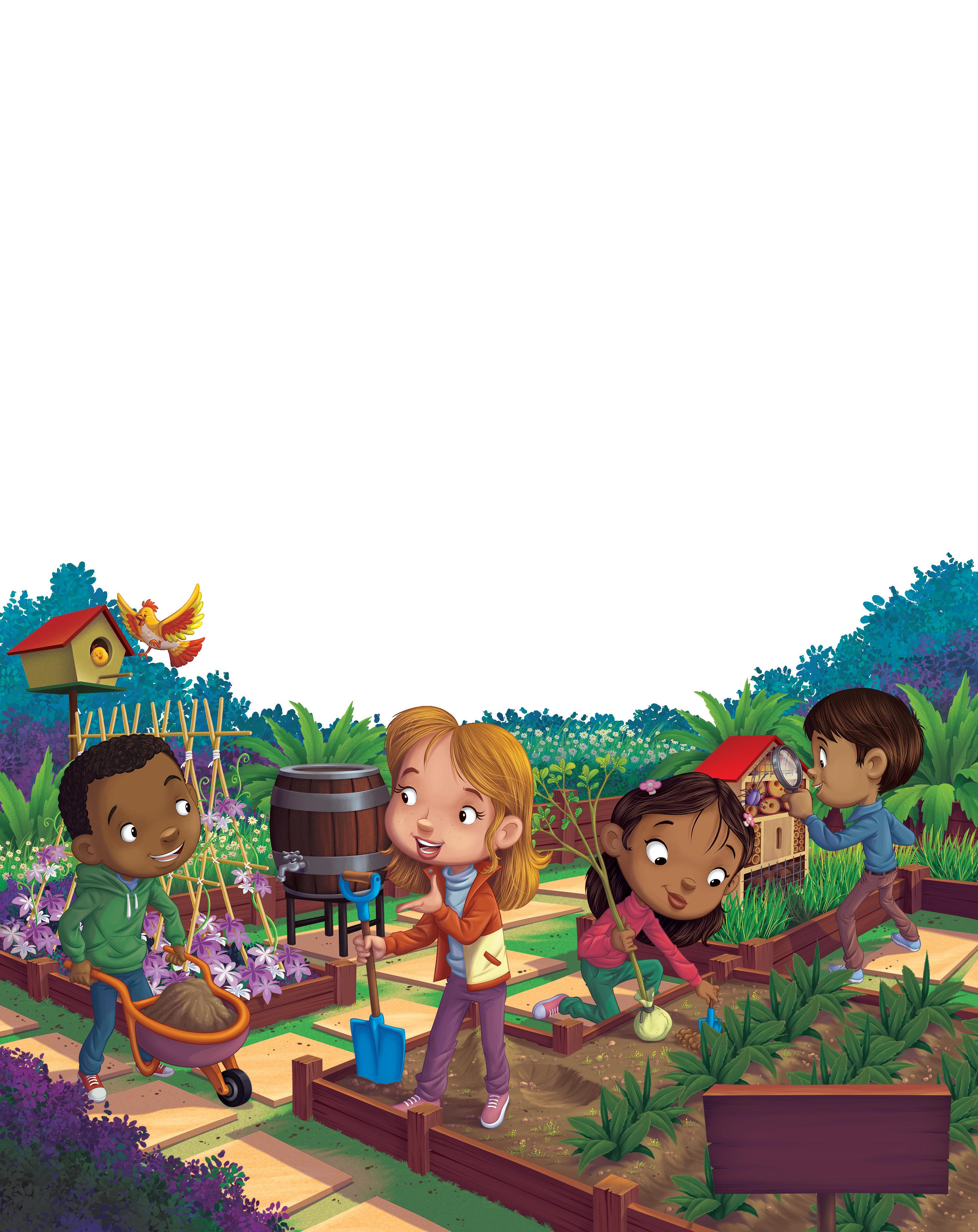

Access
Digital
Adrian Ravenscroft & Achama Mathew

Dear Teacher,
Welcome to the new edition of our Cambridge Primary Global Perspectives series, providing full support for the curriculum framework from 2022. This series has been designed to exibly meet all of your teaching needs, with a project-based approach in Stages 1–3, and a scaffolded skills approach for Stages 4–6. This preview will help you understand how the learner’s skills book and the teacher’s resource work together to best meet the needs of your classroom, timetable and learners.
This Executive Preview contains sample content from the series, including:
• A guide explaining how to use the series
• A guide explaining how to use each resource
In developing this new edition, we carried out global research with Cambridge Primary Global Perspectives teachers – through interviews and work on the Cambridge Panel, our online teacher research community. Teachers just like you have helped our experienced authors shape these new resources, ensuring that they meet the real teaching needs of the Cambridge Primary Global Perspectives classroom.
Stages 1–3 are brand-new resources, offering a project-based approach to skills development. The context of each project will scaffold the development of skills to enhance the progress of learners. Each project begins with activating learners’ prior knowledge and is lled with engaging activities, audio and video content, to holistically develop the key skills.
Stages 4–6 follow a scaffolded skills approach to learning, allowing you to be exible and adapt your teaching to your classroom needs. The learner’s skills book has been speci cally written to support English as a second language learners with key subject words, glossary de nitions in context and accessible language throughout. We have also provided new features that help with active learning, assessment for learning and student re ection. For example, new skills openers to engage your learners and highlight links to the Challenges.
Core to the series is the teacher’s resource with digital access. It will help you support your learners and con dently teach to the curriculum framework, whether you are new to teaching the subject or more experienced. For each chapter there are lesson ideas and activities, common misconceptions to look out for, worksheets, and downloadable projects for Stages 4–6 to provide further opportunities for your learners to practise the key skills, answers to the learner’s skills book, extra ideas to take learning further and more.

Please take ve minutes to nd out how our resources will support you and your learners. To view the full series, you can visit our website or speak to your local consultant You can nd their contact details here:
cambridge.org/gb/education/ nd-your-sales-consultant
Best wishes,
Julia Fusi
Commissioning Editor for Global Perspectives
Cambridge University Press & Assessment
How to use this series
This suite of resources supports learners and teachers following the Cambridge Primary Global Perspectives curriculum framework (0838) from 2022. The components in the series are designed to work together and help learners develop the necessary skills for this subject. With clear language and style, they are designed for international learners.






Global Perspectives
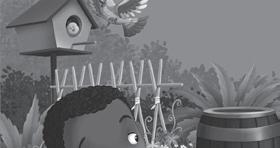



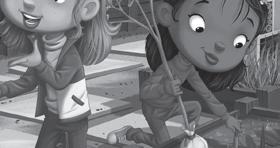






The Learner’s Skills Book is designed for learners to use in class with guidance from the teacher. It offers complete coverage of Cambridge Primary Global Perspectives. The Learner’s Skills Book supports learners in developing the Global Perspectives skills of analysis, collaboration, communication, evaluation, re ection and research through an active learning approach. Each project also provides opportunities to practise the Global Perspectives skills through audio-visual content, engaging topics, discussion activities and independent re ection.
A digital version of the Learner’s Skills Book is included with the print version and is available separately.
The Teacher’s Resource provides everything teachers need to con dently deliver the course. It is packed full of useful teaching notes and lesson plans, with suggestions for differentiation to support and challenge learners, and ideas for formative assessment.
A digital version of the Teacher’s Resource is included with the print version. The digital resource contains worked examples and templates for activities which give learners further opportunities to develop the six Global Perspectives skills through interesting projects.









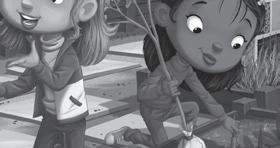

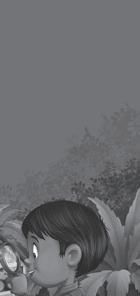





3
Learner’s Skills Book 1 Adrian Ravenscroft & Achama Mathew CAMBRIDGE PRIMARY Global Perspectives Learner’s Skills Book 1 Cambridge Primary Digital Access qualifications, classroom. with Cambridge and experienced endorsed textbooks Cambridge teachers worldwide. University Press cambridge.org/cambridge-international Global Perspectives Teacher’s Resource 1 Adrian Ravenscroft & Achama Mathew CAMBRIDGE PRIMARY Cambridge Global Perspectives Our comprehensive Cambridge Primary Global Perspectives Stage 1 Teacher’s Resource offers valuable support to enhance your teaching experience and create an engaging learning environment. From adaptable lesson plans to cross-curricular links and differentiation ideas –feel confident in your teaching approach with support from Cambridge. Access engaging downloadable worksheets and valuable assessment support on Cambridge GO. For more information on how to access and use your digital resource, please see inside front cover. Global Perspectives Teacher’s Resource 1 Cambridge Primary Digital Access Registered Cambridge International Schools benefit from high-quality programmes, qualifications, assessments and a wide range of support so that teachers can effectively deliver in the classroom. Visit www.cambridgeinternational.org to find out more. This resource is endorsed by Cambridge Assessment International Education ✓ Provides support as part of a set of resources for the Cambridge Primary Global Perspectives curriculum framework (0838) from 2022 ✓ Has passed Cambridge International’s rigorous quality-assurance process ✓ Developed by subject experts ✓ For Cambridge schools worldwide Completely Cambridge Cambridge University Press works with Cambridge Assessment International Education and experienced authors to produce high-quality endorsed textbooks and digital resources that support Cambridge teachers and encourage Cambridge learners worldwide. To find out more about Cambridge University Press visit cambridge.org/cambridge-international • The perfect accompaniment to the Stage 1 learner’s skills book, with stepby-step lesson plans to guide you and your learners through the curriculum Downloadable worksheets save lesson planning time and bring new ideas into your classroom Mapping guidance shows how the resources can be used effectively alongside the curriculum framework and Challenges Cross-curricular links demonstrate how you can teach Cambridge Global Perspectives alongside other subjects, such as English and science • Comprehensive support, including guidance on teaching approaches, effective questioning, supporting English as a second language learners, and observational assessment opportunities

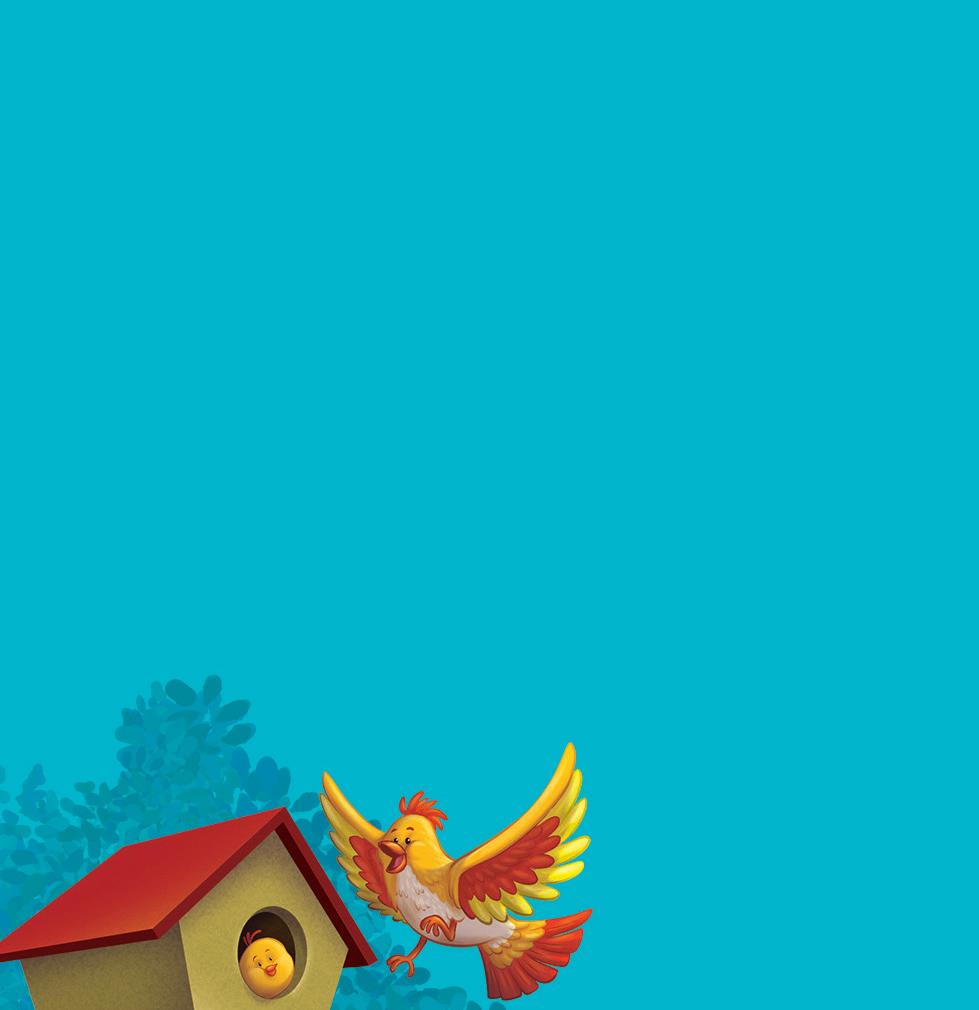


CAMBRIDGE PRIMARY
Global Perspectives
Learner’s Skills Book 1
Adrian Ravenscroft & Achama Mathew
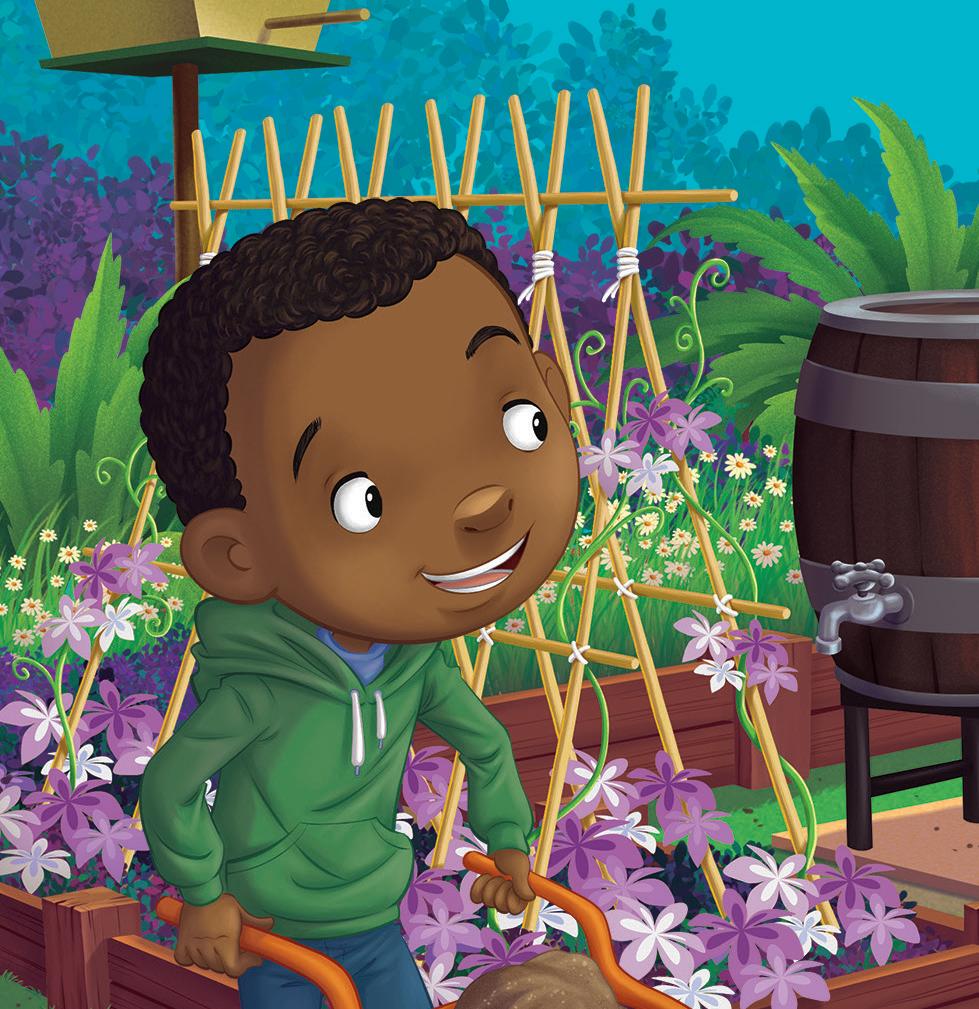

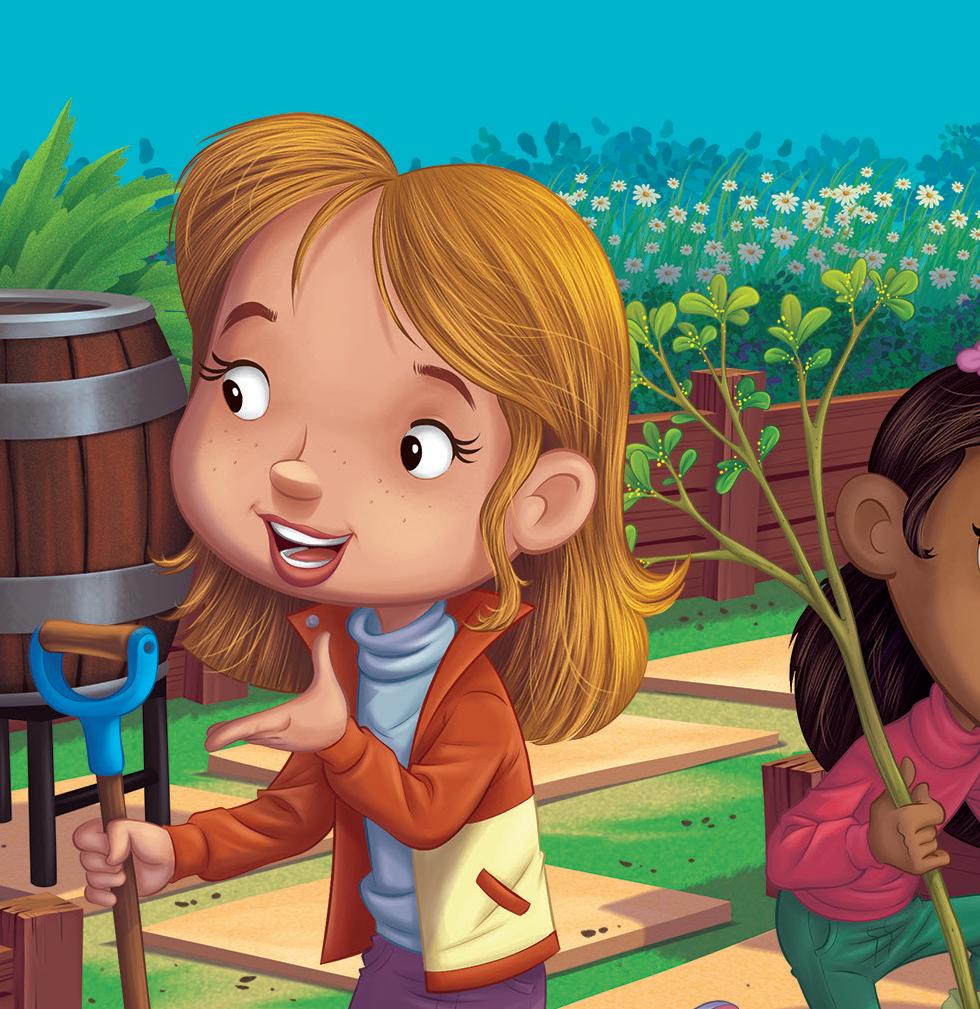
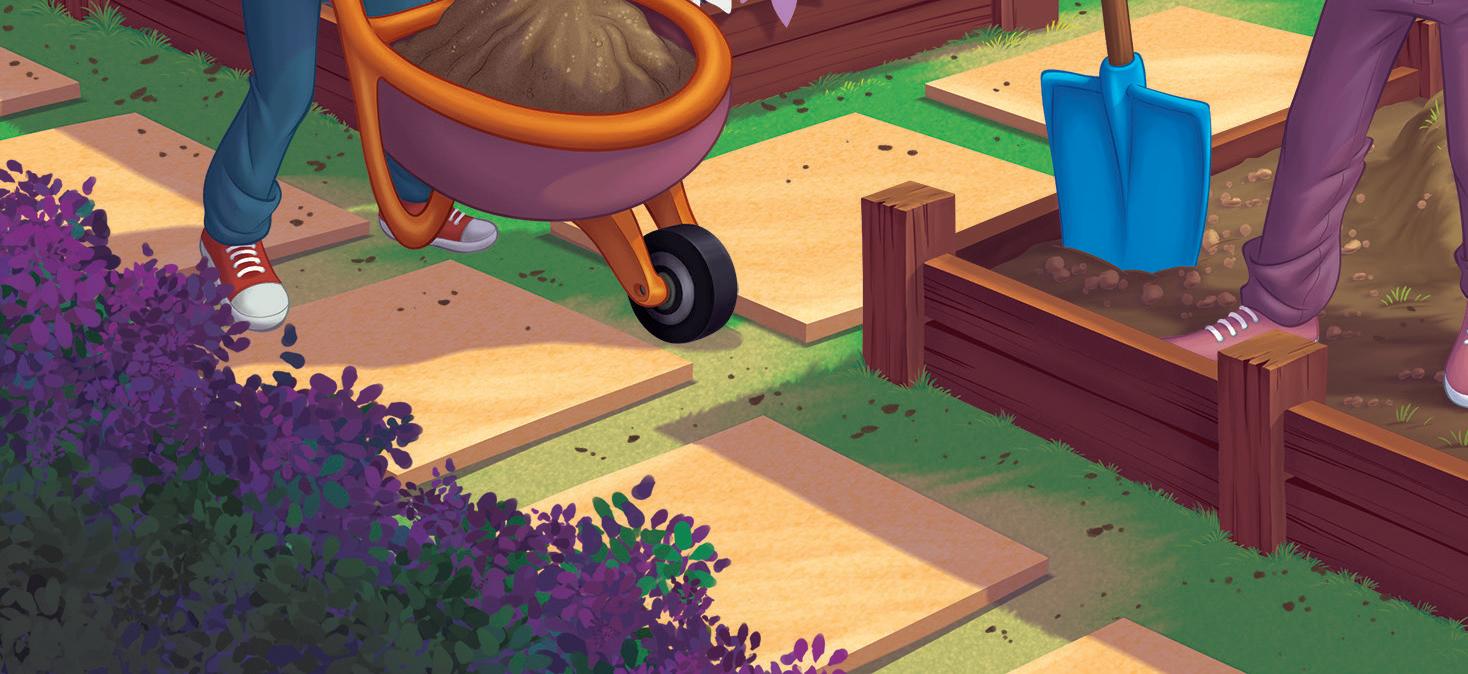

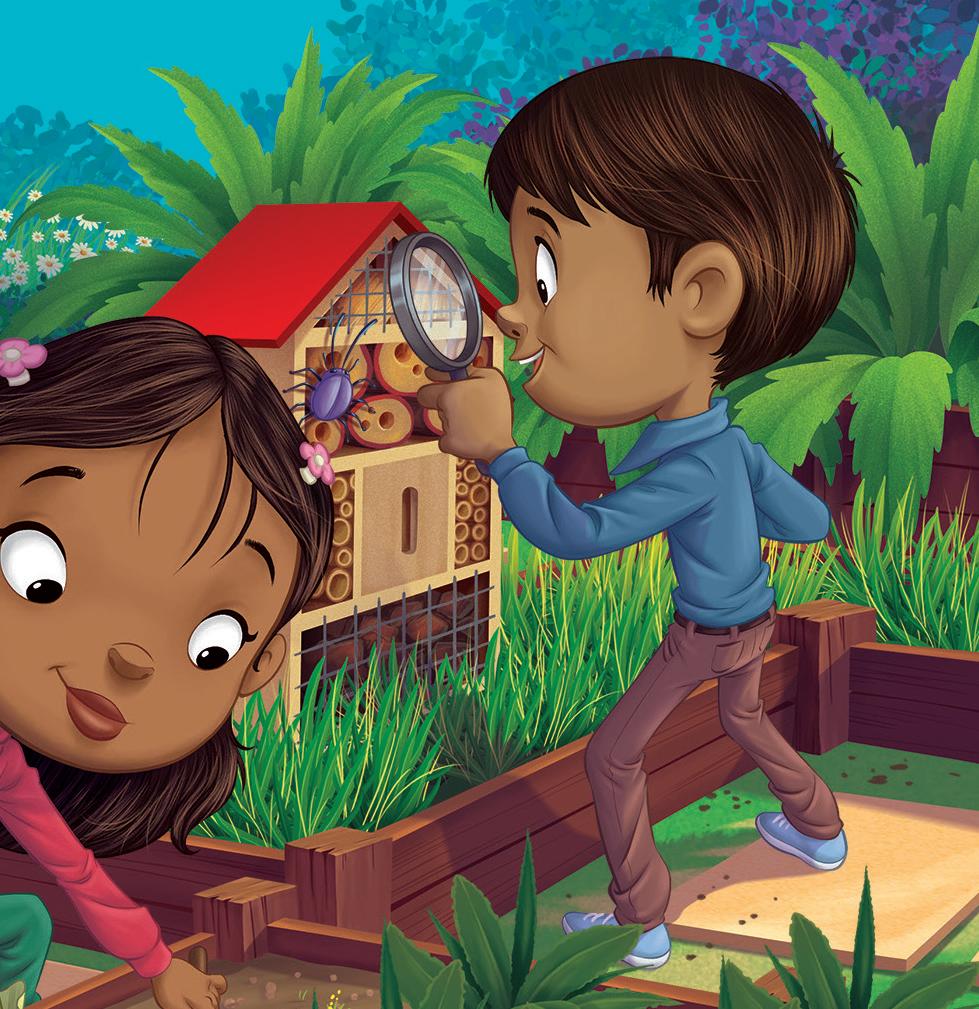

Digital Access SAMPLE Original material © Cambridge University Press & Assessment 2023. This material is not final and is subject to further changes prior to publication.
5 Contents Contents Introduction 6 How to use this book 8 1 What can families teach us? 10 2 What kind of garden would be best? 34 3 What do we know about jobs? 54 4 How can we save water? 80 Glossary 108 SAMPLE Original material © Cambridge University Press & Assessment 2023. This material is not final and is subject to further changes prior to publication.
Introduction
Welcome to Stage 1 of Cambridge Primary Global Perspectives. We hope you will find the projects in this book interesting. You are going to work on four projects. The projects in this book help you understand new things. The projects are about:
• your family
• gardens
• jobs people do
• saving water.
There are four children in the book. They try out all of the projects.
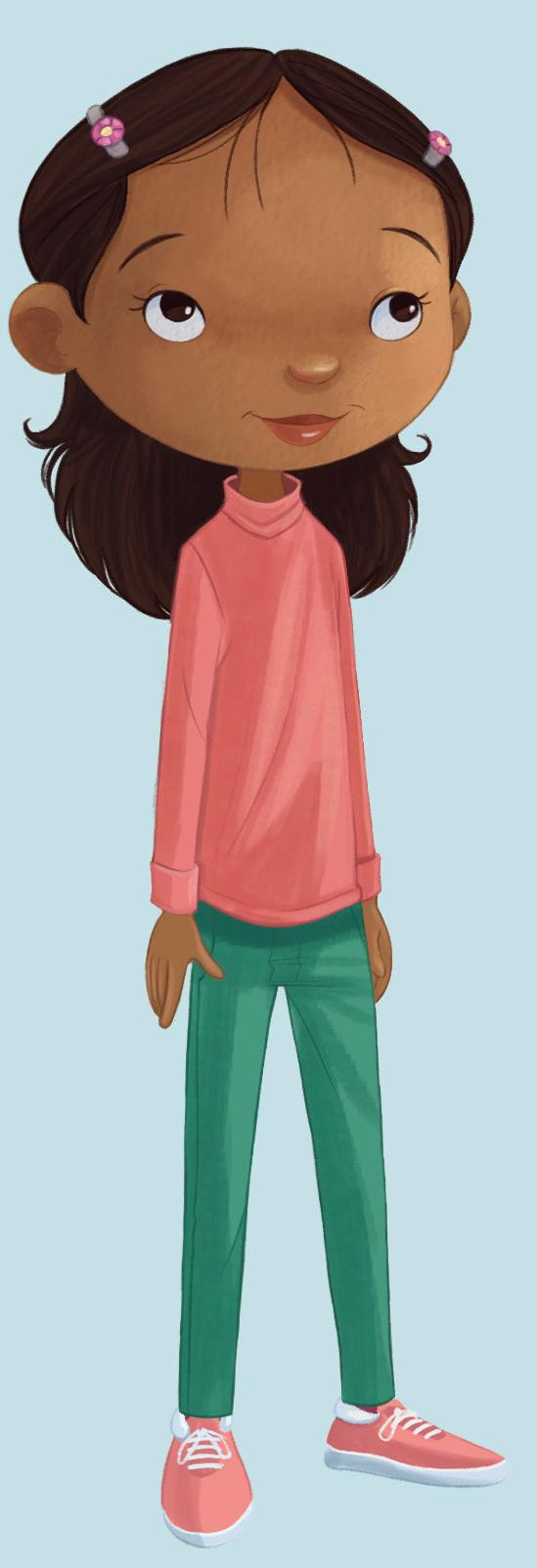
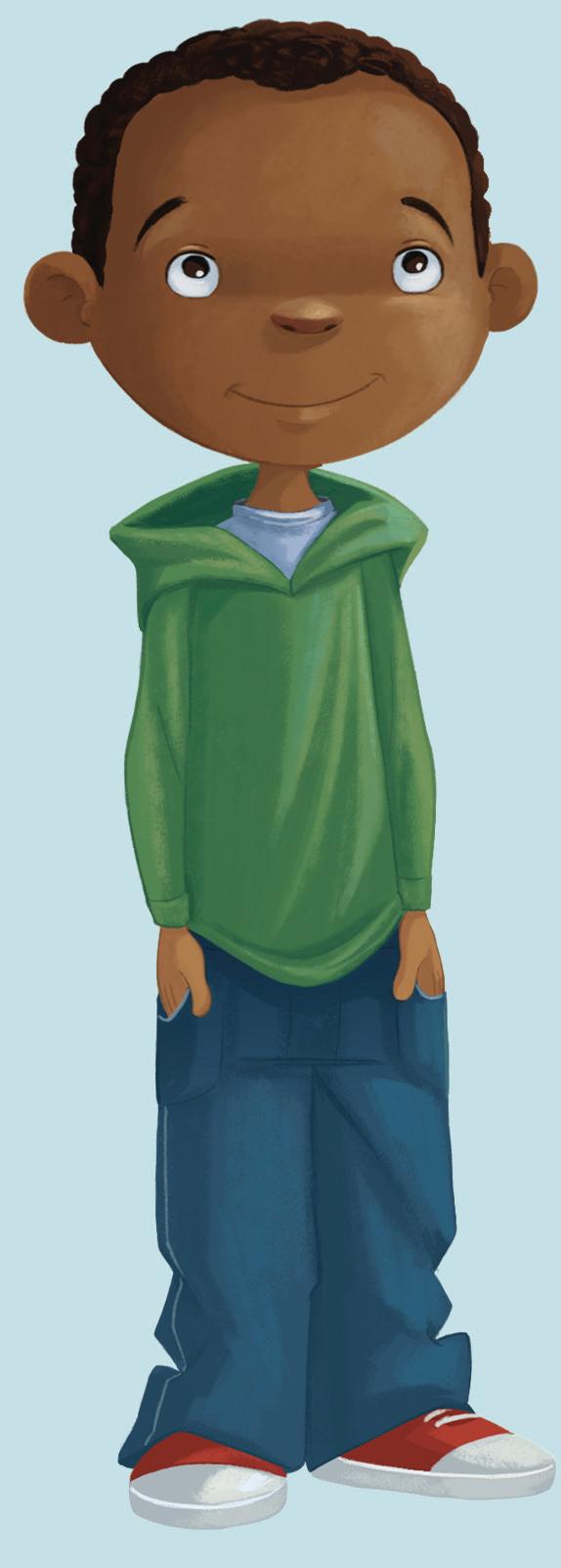


6
Introduction
SAMPLE Original material © Cambridge University Press & Assessment 2023. This material is not final and is subject to further changes prior to publication.
Here is Zara. Here is Marcus. Here is Arun. Here is Sofia.
You do not need to learn facts. You will need to help people.
You will learn how to:
• find out new facts
• find out what people think
• talk to lots of people
• think about what you do.
You will need to work in different ways:
• sometimes you will work on your own
• sometimes you will work with a partner or a group
• sometimes you will learn in the classroom
• sometimes you will learn in different places.
There are lots of ways to do well:
• think about your own ideas
• think about other people’s ideas
• help other learners to learn
• try out new ways to learn
• help other people to learn new things.
We hope you will enjoy the projects in this book!
Adrian Ravenscroft and Achama Mathew



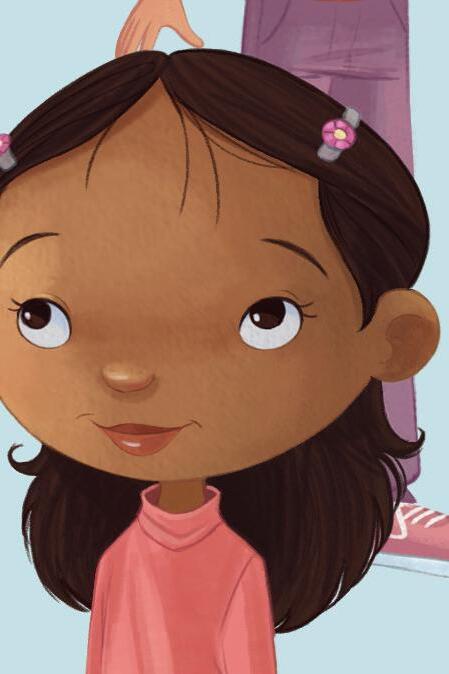


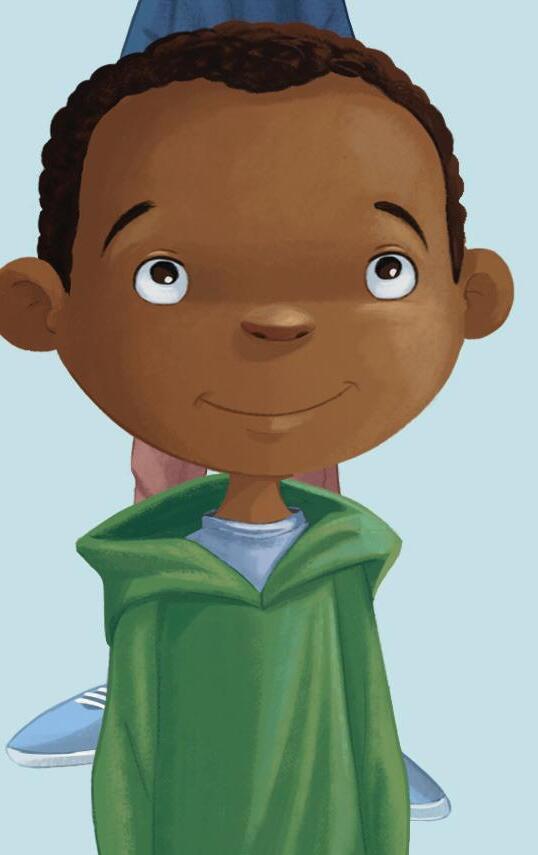

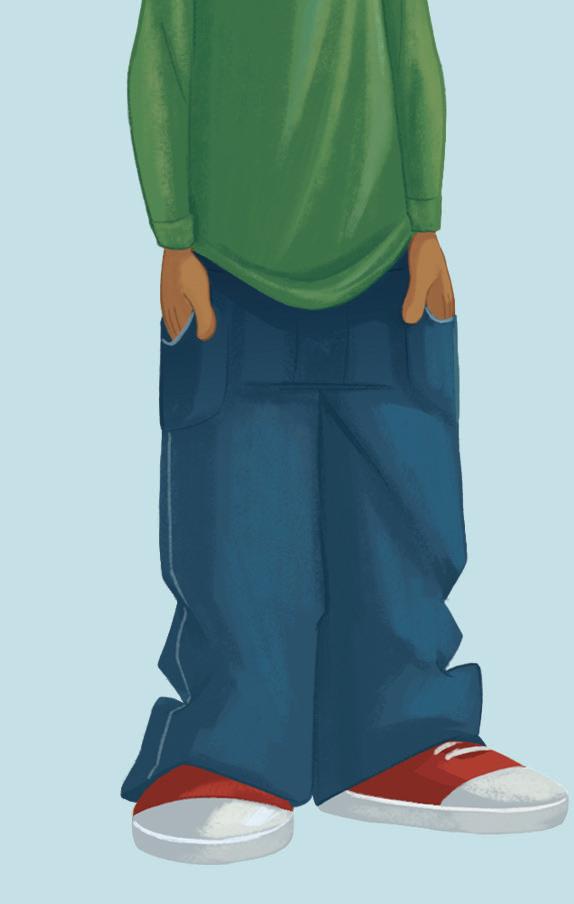
7 Introduction
SAMPLE Original material © Cambridge University Press & Assessment 2023. This material is not final and is subject to further changes prior to publication.
How to use this book
How to use this book
1 What can we learn from older family members?
2 How could you show your family that you are grateful? Draw or write your idea here.
In this book you will find lots of different things to help your learning.
1 What can we learn from older family members?
2 What kind of garden would be best for our school?
You will see a picture and discussion at the start of each project.
Getting started
2.2 How can I find out what learners in my class think about gardens?
With your class, look at the pictures and talk about the questions.
· Who are the people in the pictures?
· What are they doing?
· What things do you like doing with your family?
Learning goals
Our learning goals I thinkMy teacher thinks
1.3 What can I find out in an interview?
I can make a chart that shows learners’ ideas
The learning goals show you what you will learn. There is space for you to show what you think at the end of the lesson. There is also space for your teacher to say what you have learned.
Learning goals
Our learning goals I thinkMy teacher thinks
I can ask questions to find out about people’s lives
How can we use pictures to show our ideas?
1 Sofia and her friends have lots of ideas for things to put in their school garden. They have drawn a little picture for each idea:
2

Plants for the butterflies
Fruit to pick
A minibeast hotel
This tells you what the key words are. Key words are in the glossary. The glossary is at the back of the book. You can find out what the key words mean there.
What questions can we ask in an interview?
1 You are going to interview a visitor to your class. You will ask them questions to find out about their life when they were a child. interview
chartpopular



The learners want to find out which is the most popular idea. They make a chart like this:
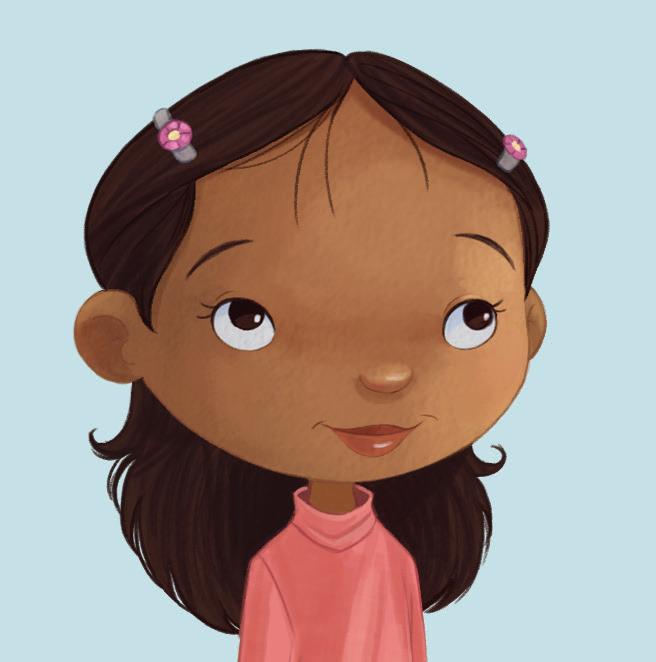
8
.......................................................... .........................................................
SAMPLE Original material © Cambridge University Press & Assessment 2023. This material is not final and is subject to further changes prior to publication.
Here are things to do. They will help you learn.
Then tell your partner what you would like and why.
Interesting facts and information.
I would like a seat and some sunflowers. Learners can sit and watch the birds eating the sunflower seeds. It will be a peaceful garden.
Useful words. You can use these words.
How should we work together?
3 Talk about your model garden with your group. What will you tell other learners about it?
Remember to:
Say how you made your garden.
How to use this book
Say why it is a good garden.
Say what your favourite thing is.
What questions will we ask?
1 Look at Sofia, Arun and Zara’s garden again.
Marcus wants to find out more about their garden. He thinks of three questions.
Draw J next to the good questions.
Draw L next to a question that is not useful.
How did you make the tree?
Did you know?


How old are you?

Do butterflies like these flowers?
0




Did you know that plants need food? Compost is a very good food for plants. You can make it in a compost box in your garden. It’s easy! Just put your banana skins, apple cores and vegetable peel in the box. Mix it up with a spade. After a few months, you will have lovely compost!
2 What kind of garden would be best for our school?
2 Explain your answers to your partner. Say why. Here is an example:
1 Your teacher will give you some things to make your model garden with. You will work with a group. Read Zara’s rule for working together well.







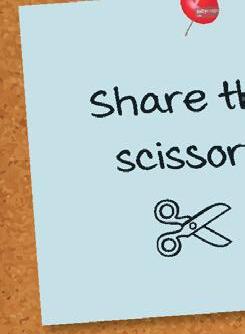
Share the scissors







With your group, think of another rule. Write it here.
facts and ideas about gardens. Write why you chose this source or tell your teacher.



00 Audio is available on Cambridge GO and in the Teacher's Resource.
I chose this source because …....................................................................................
Draw or write the things that you find out.
2 Now make your model garden with your group.
Good things to do
2 What kind of garden would be best for our school? 39
3 Talk about what you have found out.
a very good source quite a good source not a good source because I found out …
Video is available on Cambridge GO and in the Teacher's Resource. Your teacher will have access to free supporting resources through Cambridge GO – the home for all your Cambridge digital content. Visit cambridge.org/go
Good things to put in a garden

9
36
Original material © Cambridge University Press & Assessment 2023. This material is not final and is subject to further changes prior to publication.
SAMPLE

1 What can families teach us?
Getting started


With your class, look at the pictures and talk about the questions.
· Who are the people in the pictures?
· What are they doing?
· What things do you like doing with your family?

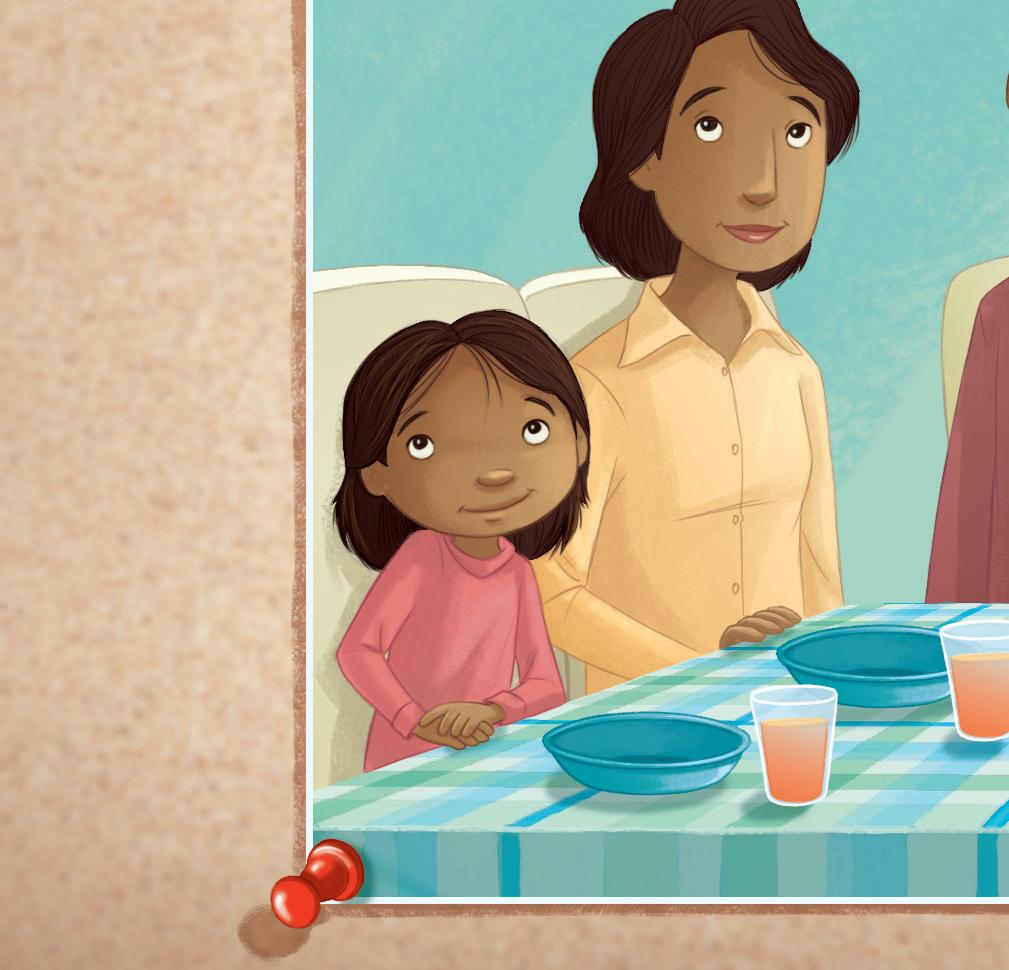





10
sister
uncle father mother
SAMPLE Original material © Cambridge University Press & Assessment 2023. This material is not final and is subject to further changes prior to publication.
Arun
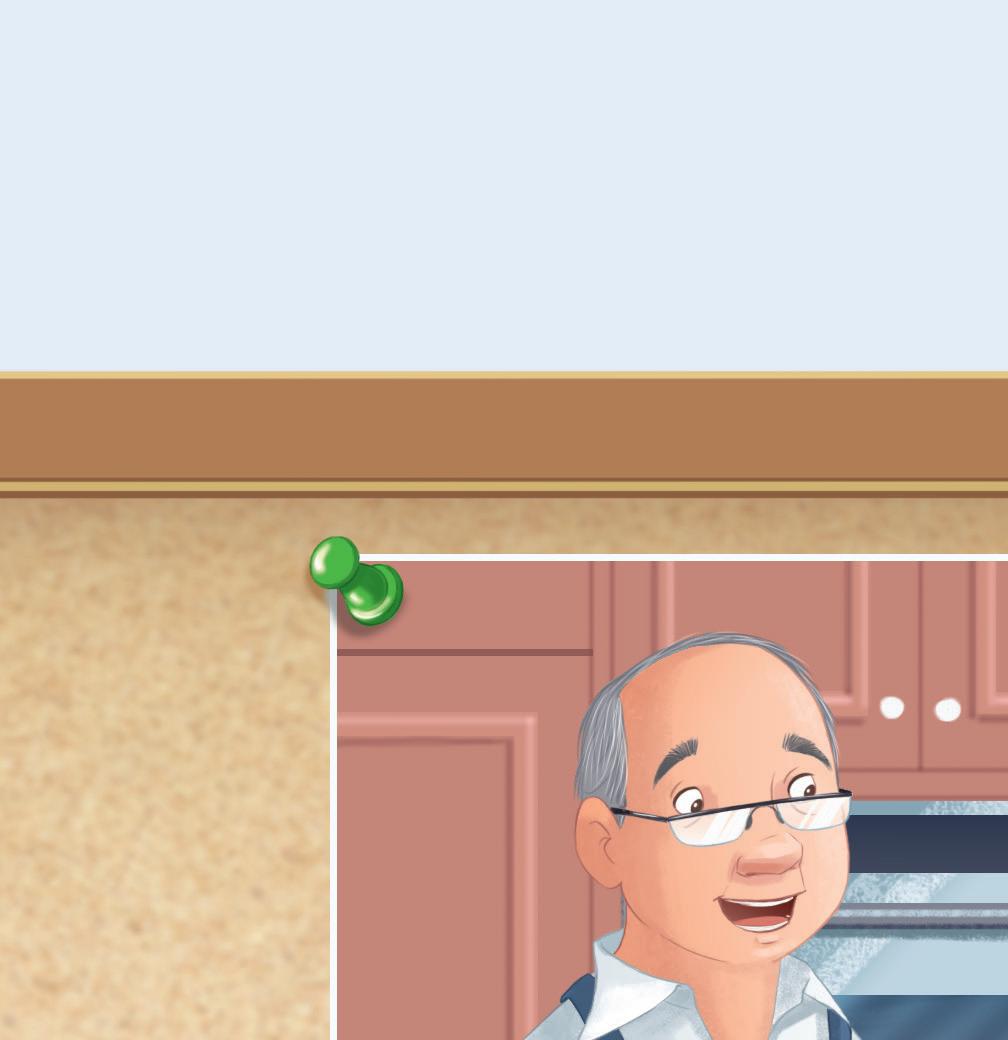



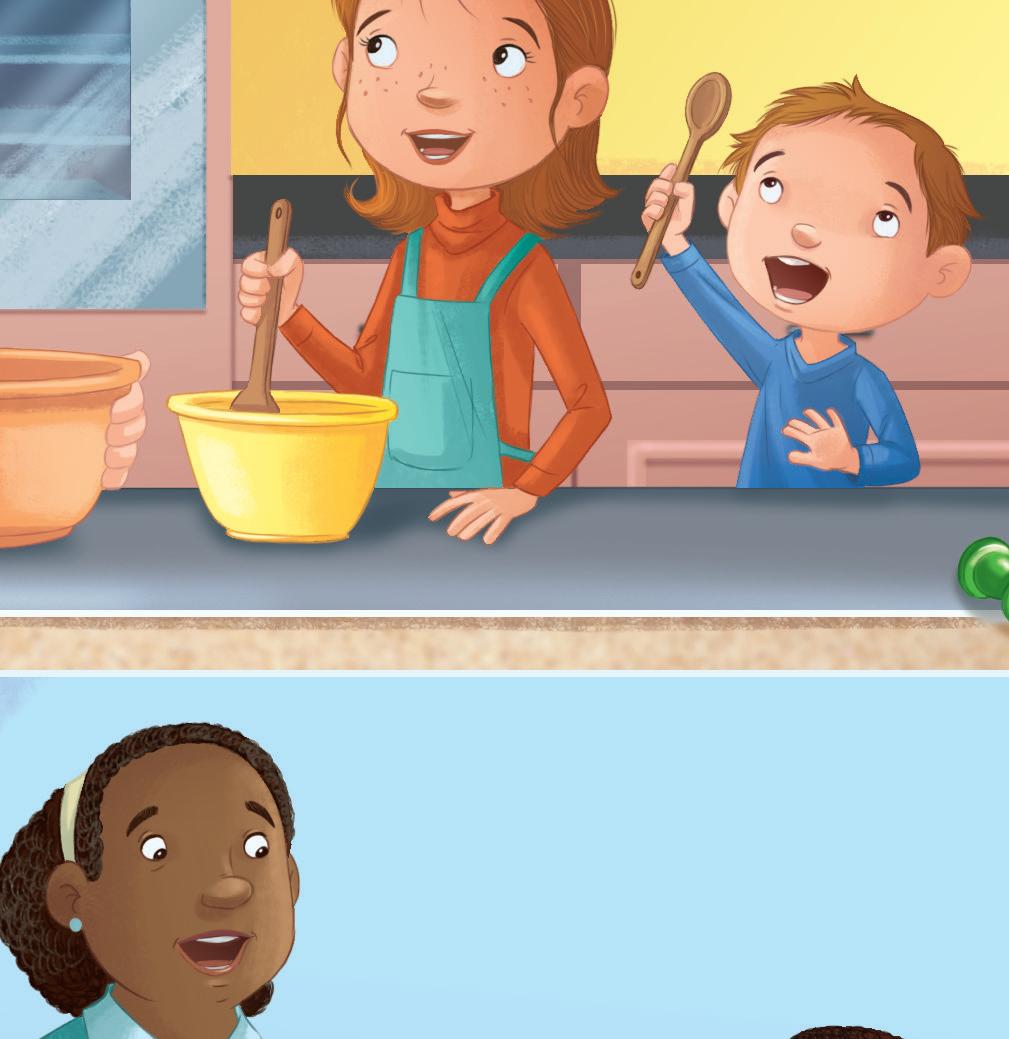



1 What can families teach us? 11
Original material © Cambridge University Press & Assessment 2023. This material is not final and is subject to further changes prior to publication.
Marcus grandfather brother grandmother aunt cousin Sofia
SAMPLE
1.1 Who is in my family?
Learning goals
Our learning goals I thinkMy teacher thinks
I can say who is in my family
I can find out if we all use the same names for family members
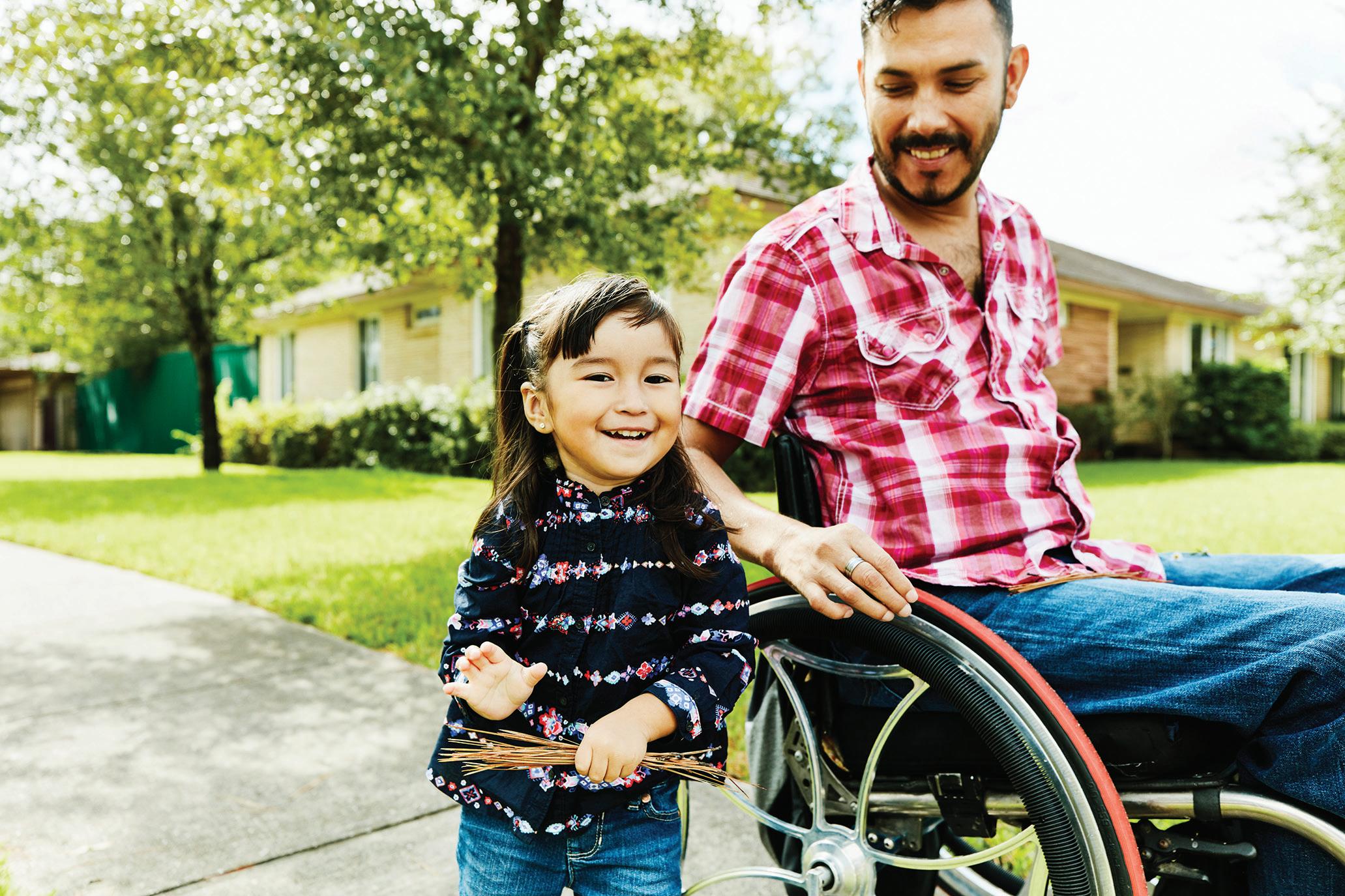

1 What can families teach us? 12
.......................................................... ..........................................................
.......................................................... .......................................................... SAMPLE Original material © Cambridge University Press & Assessment 2023. This material is not final and is subject to further changes prior to publication.
Who are my family members?
1 Look at the picture of Arun’s family again. Five people live in Arun’s home: Arun, his sister, his uncle, his father and his mother.
Draw the people who live with you in your home. Or you can stick in a photograph.










Write who those people are by writing their names beneath your drawing or photo.
2 Write the names of some family members who do not live with you. Do you know where they live? Tell your partner.

1 What can families teach us? 13
............................................................................................................................................. ............................................................................................................................................. ............................................................................................................................................. family member
SAMPLE Original material © Cambridge University Press & Assessment 2023. This material is not final and is subject to further changes prior to publication.
can
What do I call my adult family members?
1 Read what Marcus and Arun say.
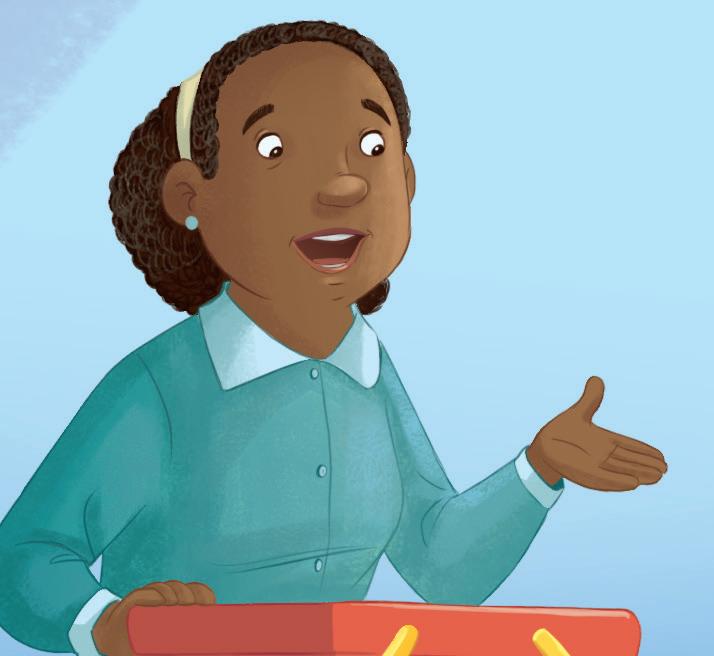


This is my grandmother. Her name is Ada and I call her Nanna.
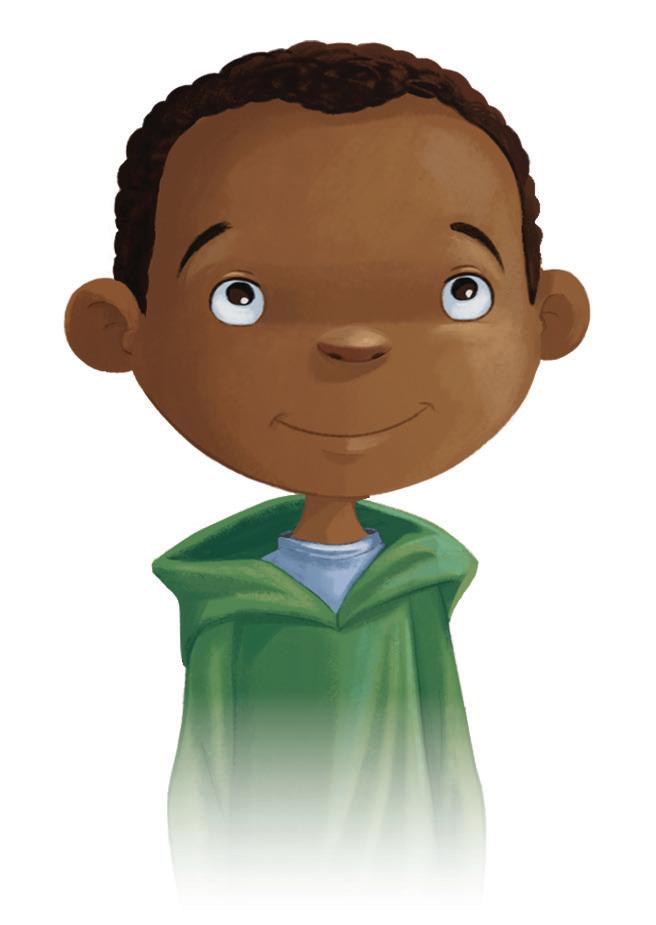
This is my father. His name is Arjun and I call him Papa.
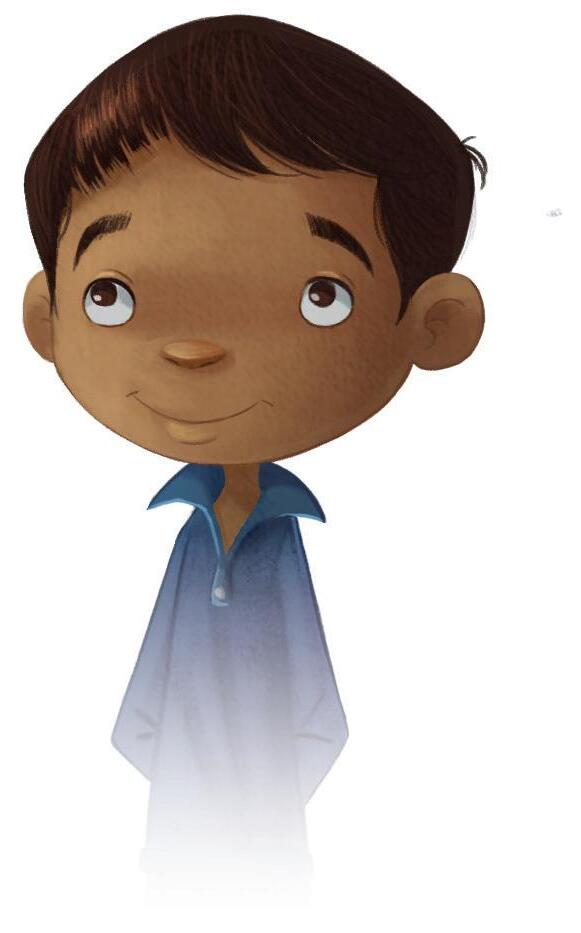
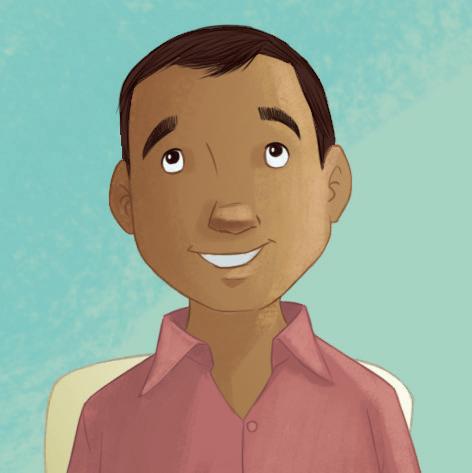

What do you call your older family members? Write it in the table.
Family member
Grandmother Father
What I call them
can families teach us? 14
1 What
SAMPLE Original material © Cambridge University Press & Assessment 2023. This material is not final and is subject to further changes prior to publication.
2 Are there other adults who are not family members who look after you too? Write what you call them here.
.............................................................................................................................................
Do we all have the same names for our family members?
Work in a group. Say what you wrote in your chart. Do all the children in your group use the same names for family members?
Write the name of one family member where you all have the same name.
............................................................................
Write the name of one family member where you all have different names.
............................................................................
Did you know?
There are lots of different names for a grandmother. In Italy, they call her Nonna. In South Africa, they call her Ouma or Gogo. In Indonesia, she is Nenek.






1 What can families teach us? 15
SAMPLE Original material © Cambridge University Press & Assessment 2023. This material is not final and is subject to further changes prior to publication.
same different
1.2 What have my family members taught me to do?
Learning goals
Our learning goals I thinkMy teacher thinks
I can talk about what I have learned from family members
I can record answers in a chart
What can we learn from our family members?
You are going to watch a video. You will see children doing things with their families.



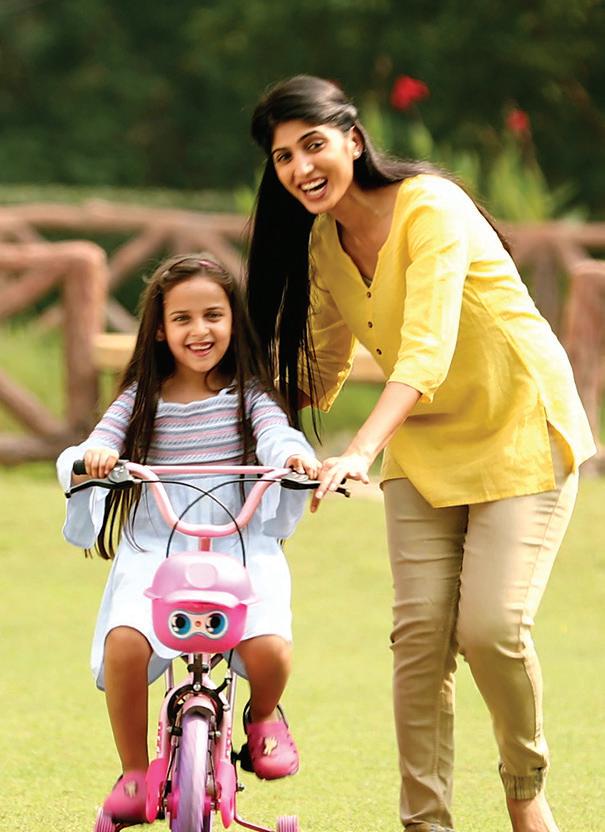

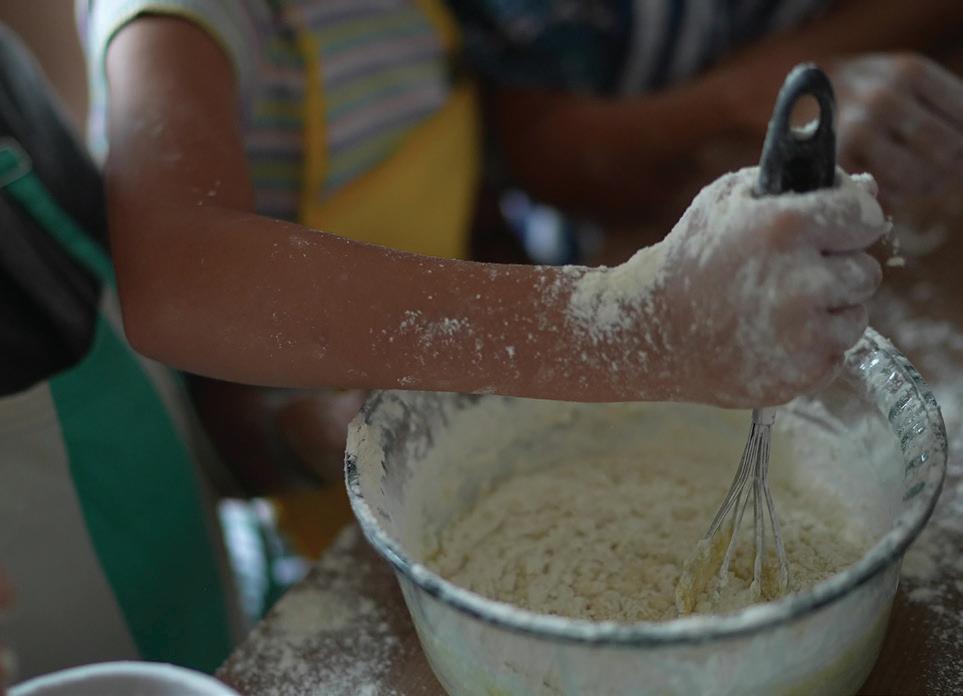

1 What can families teach us? 16
.......................................................... ..........................................................
.......................................................... .........................................................
1 1 2 3 SAMPLE Original material © Cambridge University Press & Assessment 2023. This material is not final and is subject to further changes prior to publication.
1 Look at the pictures from the video. Talk about them.
· What are the children learning to do?
· Who is showing them how to do it?
· Can you do the things you see in the pictures? Who showed you how?
2 Think of two more things that you have learned how to do. Who showed you how?
How can I fill in a chart?
1 Zara has learned lots of things from the people who look after her. She has written them in a chart.
Look at Zara’s chart.

Can I do it? ✓ Who taught me how?
brush my teeth
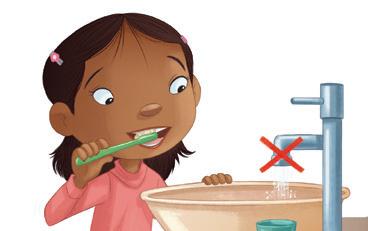

fly a kite ✓ Papa
water the plants
What things has Zara learned to do? Who taught her? taught
✓ Mum and Papa
✓ Mrs Ghulam
1 What can families teach us? 17
SAMPLE Original material © Cambridge University Press & Assessment 2023. This material is not final and is subject to further changes prior to publication.
2 Fill in the chart for yourself.
Put a tick (✓) in the box of the things that you have learned to do.
Write the name of the person who taught you.
Can I do it? ✓ Who taught me how?
brush my teeth fly a kite
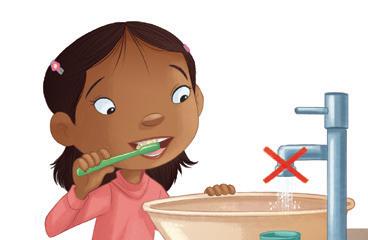

water the plants
Finish the chart. Draw or write two more things that you can do. Write who taught you to do the things.
1 What can families teach us? 18
SAMPLE Original material © Cambridge University Press & Assessment 2023. This material is not final and is subject to further changes prior to publication.
3 Talk to a partner about your chart.
Share with your partner what you have learned from different family members. Put a tick (✓) in the box for same or different. Has your partner learned the same things as you or different things? same different

4 Have you got a younger brother, sister, cousin or friend? What could you teach them to do? Write your ideas here. .............................................................................................................................................
How can I show I am grateful?
I have learned how to fly a kite. My grandad taught me. grateful

1 Our family members share a lot of things with us. We learn a lot of things from them.
Marcus has thought of some ways to show his family that he is grateful. What do you think about Marcus’s ideas? Draw if it is a good idea. Draw L if it is not a good idea.
Buy them a new car.
Say ‘Thank you’. Do something helpful at home.
1 What can families teach us? 19
.............................................................................................................................................
SAMPLE Original material © Cambridge University Press & Assessment 2023. This material is not final and is subject to further changes prior to publication.
1 What
2 How could you show your family that you are grateful?
Draw or write your idea here.

1.3 What can I find out in an interview?
Learning goals
Our learning goals I thinkMy teacher thinks
I can ask questions to find out about people’s lives
What questions can we ask in an interview?
1 You are going to interview a visitor to your class. You will ask them questions to find out about their life when they were a child.
First, listen to this interview. Sofia is talking to her grandfather. What questions does she ask?

families teach us? 20
can
......................................................... ..........................................................
interview SAMPLE Original material © Cambridge University Press & Assessment 2023. This material is not final and is subject to further changes prior to publication.
1
2 Listen again. Answer these questions with your partner.
a What things did Sofia’s grandfather do when he was a child?
b Which people taught Sofia’s grandfather how to do different things?
c How was Sofia’s grandfather’s life different from your life?
How do we interview a visitor?
1
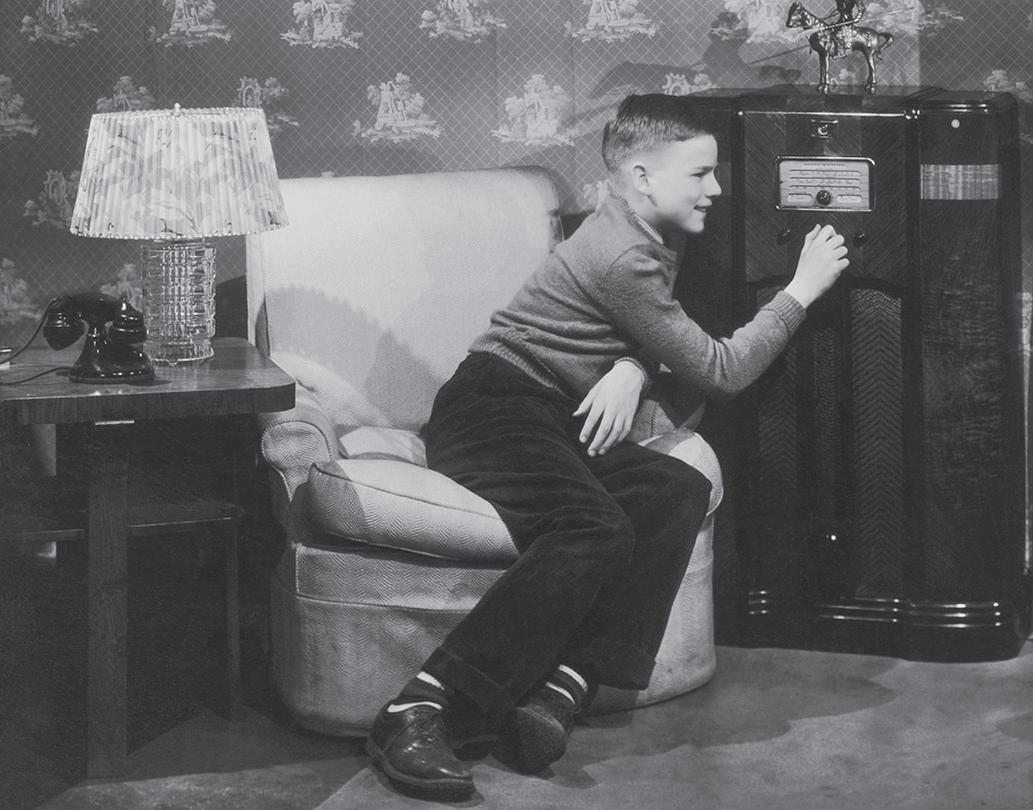

You are going to do your own interview. You will interview a visitor.
Our visitor’s name is ....................................................................................................
2 Work in a small group.
Think of what you would like to know about your visitor’s life as a child. Make up some questions.


You could ask questions about these things: School

Favourite things to do Toys


A favourite birthday memory Keeping in touch with people


Your own ideas!
1 What can families teach us? 21
Original material © Cambridge University Press & Assessment 2023. This material is not final and is subject to further changes prior to publication.
SAMPLE
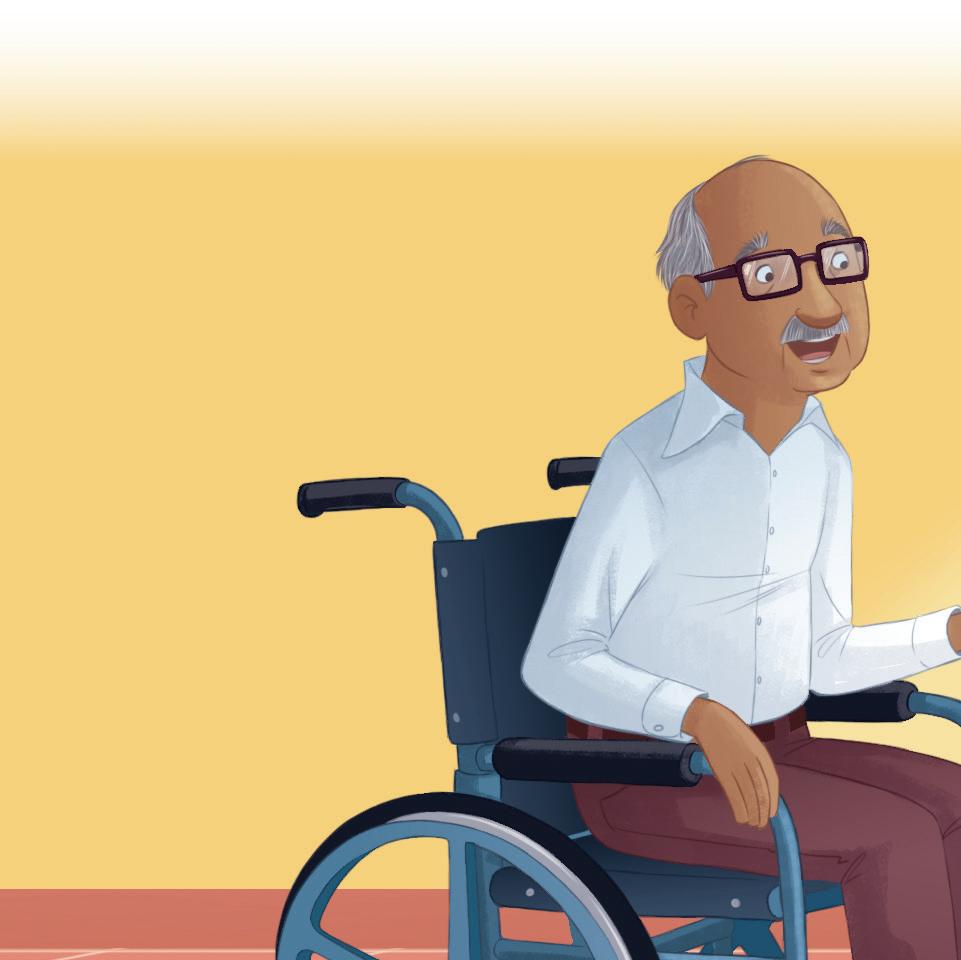


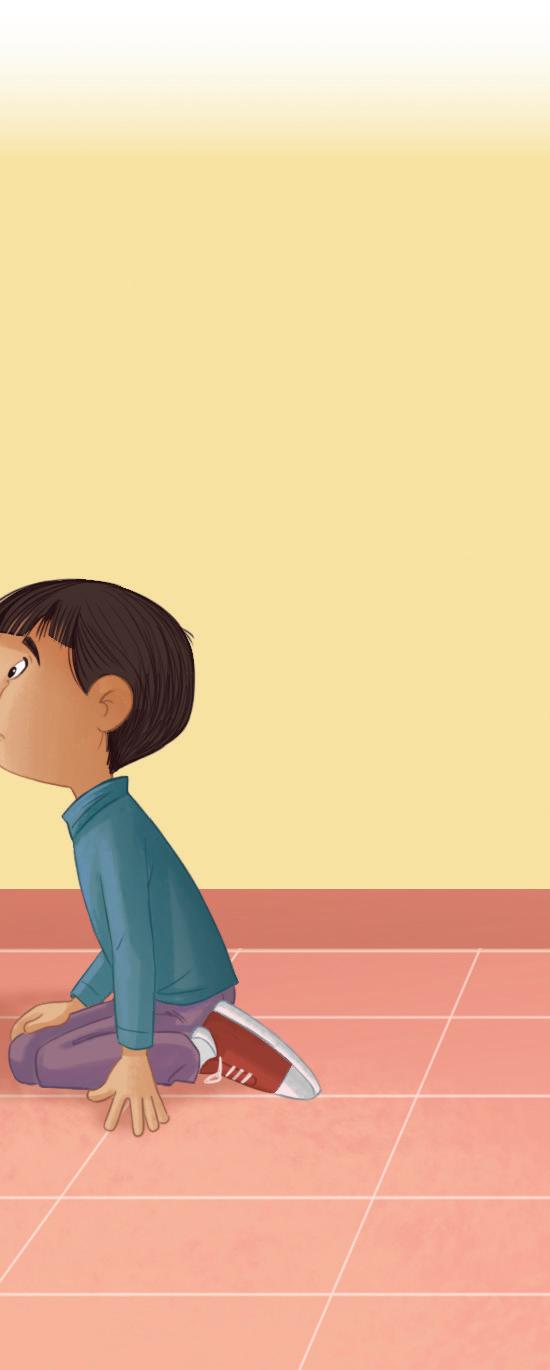
1 What can families teach us? 3 Decide which your best questions are. Make a list. 1 ...................................................................................................................................... .............................................................................. Name:.................................... 2 ...................................................................................................................................... .............................................................................. Name:.................................... 3 ...................................................................................................................................... .............................................................................. Name:.................................... 4 ...................................................................................................................................... .............................................................................. Name:.................................... 4 Decide who will ask each question. Write their name next to the question. 5 With your teacher, practise asking the questions. SAMPLE Original material © Cambridge University Press & Assessment 2023. This material is not final and is subject to further changes prior to publication.
6 Carry out the interview. Ask the visitor your questions.

That’s interesting! Can you tell me more about ….?
Thank you for talking to us.
What did we learn from the interview?
1 Put a tick (✓) in the box for the information you found out. their family their school jobs their parents did games they played the toys they had their friends their house how they helped at home
Did you find out some other information? Write or draw it here.

2 Answer the questions. Circle Yes or No.
Did you like doing the interview?
Yes / No
Did you find out some interesting information? Yes / No
Share the reasons for your answers with the class.
1 What can families teach us? 23
SAMPLE Original material © Cambridge University Press & Assessment 2023. This material is not final and is subject to further changes prior to publication.
3 Now you can interview someone in your family or someone who looks after you. Who would you like to interview? Write their name here. .....................................................................................
1.4 What else can I find out from my family members?
Learning goals
Our learning goals I thinkMy teacher thinks
I can learn stories, games and interesting facts from older people
What can we find out about a festival?
Arun, Zara and Sofia wanted to learn some more things from the people who look after them. Arun’s grandmother showed him a photo. She told him about a festival called Diwali.
1 Arun calls his grandmother Naani. She grew up in Delhi in India. Look at the photo that Naani showed Arun.
Listen to Arun telling us what his Naani said about the photo. Answer these questions.
a What festival is she talking about?
b What did Naani’s family do during this festival?



1
can families teach us? 24
What
.......................................................... ..........................................................
2
SAMPLE Original material © Cambridge University Press & Assessment 2023. This material is not final and is subject to further changes prior to publication.
festival
2 Listen again. Answer these questions with your partner.
a What is the most interesting thing you have learned about Diwali?
b Why do you think Naani said it was the best time of the year?
What stories can we find out?
Zara’s aunt told her a story about her father and a bell.
Zara wanted to share the story with her friends at school. Her teacher helped her to write it down.
1 Listen to your teacher read Zara’s aunt’s story.
My aunt lived in a village far from the city. Her father was a doctor. All the people in the village called him Doctor Uncle. There was a big bell on the door of my aunt’s house. People would ring the bell to let Doctor Uncle know that they were waiting to see him.


One day an old man came to see Doctor Uncle. His legs were hurting and he could not walk. Doctor Uncle checked the old man’s legs. He took out a big thorn, put a bandage on and gave the old man a walking stick. The old man felt better. On his way out, he rang the bell loudly. My aunt went out to see what had happened. The old man said he was so happy that he was feeling better, he rang the bell to say ‘thank you’ to Doctor Uncle. He wanted everyone in the village to know that the doctor had helped him. From that day on, my aunt heard the bell ring every day, many times. All the people of the village would ring the bell on their way out …just to say thank you to Doctor Uncle!
1 What can families teach us? 25
Original material © Cambridge University Press & Assessment 2023. This material is not final and is subject to further changes prior to publication.
SAMPLE
1 What
2 Read the questions about the stor y. Then answer the questions.
a Who told this story to Zara? ..............................................................................
b How did the doctor help the old man? Tick (✓) the box.
· He gave him some medicine.
· He took out a thorn.
c Why did people ring the bell? ............................................................................
...................................................................................................................................... ......................................................................................................................................
d Do you think he was a good doctor? Tick (✓) the box.
Yes No
Why do you think that? ....................................................................................... ...................................................................................................................................... ......................................................................................................................................
3
Talk to your par tner. Who tells you stories in your family?
What are the stories about? What is interesting about the stories?
What games can we find out about?
Sofia’s neighbour Maria told Sofia about a game. It is a game Maria played with her family many years ago. The game is called ‘Dots and Boxes’. Sofia wanted to tell her friends about the game. Her teacher helped her write down the instructions.
families teach us? 26
can
S S S S MM SAMPLE Original material © Cambridge University Press & Assessment 2023. This material is not final and is subject to further changes prior to publication.
This is the game that Sofia played with Maria.
1 Read the instructions.

HOW TO PLAY DOTS AND BOXES
You can play this game with two, three or four players.
You have a sheet of paper with dots like this: S M
Each person needs a pencil.
Players take turns to draw a line between two dots. Each player can draw only one line when it is their turn.
The aim is to join the lines to make squares.
If you make a square, you can write the first letter of your name in the square. You win that square.
The person who wins the most squares is the winner!
Look at the game that Sofia played with her neighbour Maria.
Who won that game?
Play the game with your partner!
1 What can families teach us? 27
SAMPLE Original material © Cambridge University Press & Assessment 2023. This material is not final and is subject to further changes prior to publication.
Talk to your partner. Answer the questions.
a Do you like this game? Who could you play it with?
b Do you play games with your family or your friends? What games do you play? Who taught you to play the games?
c Are the games you play similar to Dots and Boxes?
d How are they different?
1.5 How can we show what we have learned?
Learning goals
Our learning goals I thinkMy teacher thinks
I can show other people what I have learned from my family
How can we make a display about the people who taught us things?
You are going to make a display with your class. The display will show the things that you have learned from someone in your family or another older person. display

1 What can families teach us? 28 2
.......................................................... ..........................................................
SAMPLE Original material © Cambridge University Press & Assessment 2023. This material is not final and is subject to further changes prior to publication.
Look at what Marcus made for his class display. He drew a picture of his grandmother. Then he wrote about what she taught him.
This is my grandmother. I call her Nanna.
She told me a story. She looked after a little bird. It fell out of its nest.
............................................................
What has the older person taught you?
A story
A game
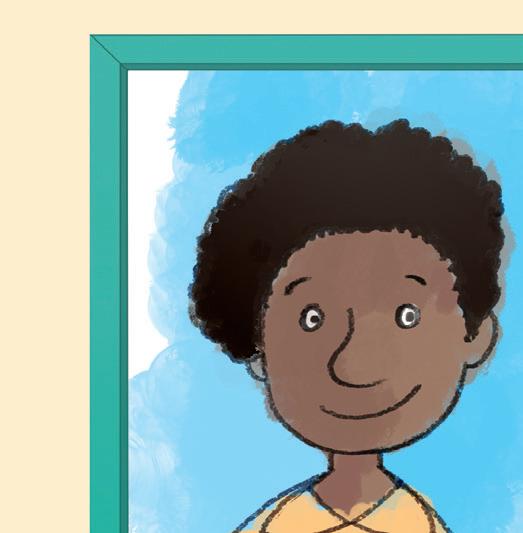
2 Draw a picture of the older person. Write their name.
Write what they have taught you.





Information about their childhood
Information about a festival



1 Choose an older person who has taught you something in this project. Write their name here.
Something else: .............................................................................................................





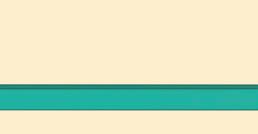





families
us? 29
1 What can
teach
............................................................ ............................................................ ............................................................ SAMPLE Original material © Cambridge University Press & Assessment 2023. This material is not final and is subject to further changes prior to publication.
1 What can families teach us?
How will we tell people more about what we learned?
1 How could Marcus give his class more information about what he learned from his grandmother?
Write your idea here: ............................................................................................................................................. .............................................................................................................................................
2 How can you tell people about what you have learned? Discuss your ideas with a partner. Circle the ideas that you like.

Talk about it
Write about it
Draw a picture Act it out
My idea ......................................................................................................................
Write what you have decided.
I will .................................................................................................................................. .............................................................................................................................................
How can we answer questions from our classmates?
1 Your classmates will share what they learned from an older person. Think of good questions to ask.




30
What …? How …? When …? Where …? SAMPLE Original material © Cambridge University Press & Assessment 2023. This material is not final and is subject to further changes prior to publication.
2 What questions did you ask? ............................................................................................................................................. .............................................................................................................................................
Did your classmate give you a good answer? Draw a star or a face.
· a very good answer
· quite a good answer
3 Now it is your turn to share what you learned! Your classmates will ask you a question. Listen carefully. Answer their question.
What question did they ask? .............................................................................................................................................
Did you give a good answer? Draw a star or a face.
1.6 What did we enjoy doing?
Learning goals
Our learning goals I thinkMy teacher thinks
I can talk about something I liked
.......................................................... ..........................................................
1 What can families teach us? 31
SAMPLE Original material © Cambridge University Press & Assessment 2023. This material is not final and is subject to further changes prior to publication.
What have I found out about families?
In each box, write or draw something you found out.
New things I have found out
Where my family members live
Things about their childhood
Different names for family members Stories, festivals, games
1 What can families teach us? 32
SAMPLE Original material © Cambridge University Press & Assessment 2023. This material is not final and is subject to further changes prior to publication.
How did I feel about it?
Read about the things you did in this project. Draw a star or a face.
I loved it I liked it I didn’t like it much L
I talked about the names we use for family members. I did an interview.
I said what my family helped me learn.
I filled in a table.
I talked about our display.
I found out information from older family members.
I made a display.
I learned to play a new game.
Have I learned how to do something new?
Marcus learned how to do something new in his project.
I have learned how to make a display
Write one thing you learned how to do.
I have learned how .....................................................................................
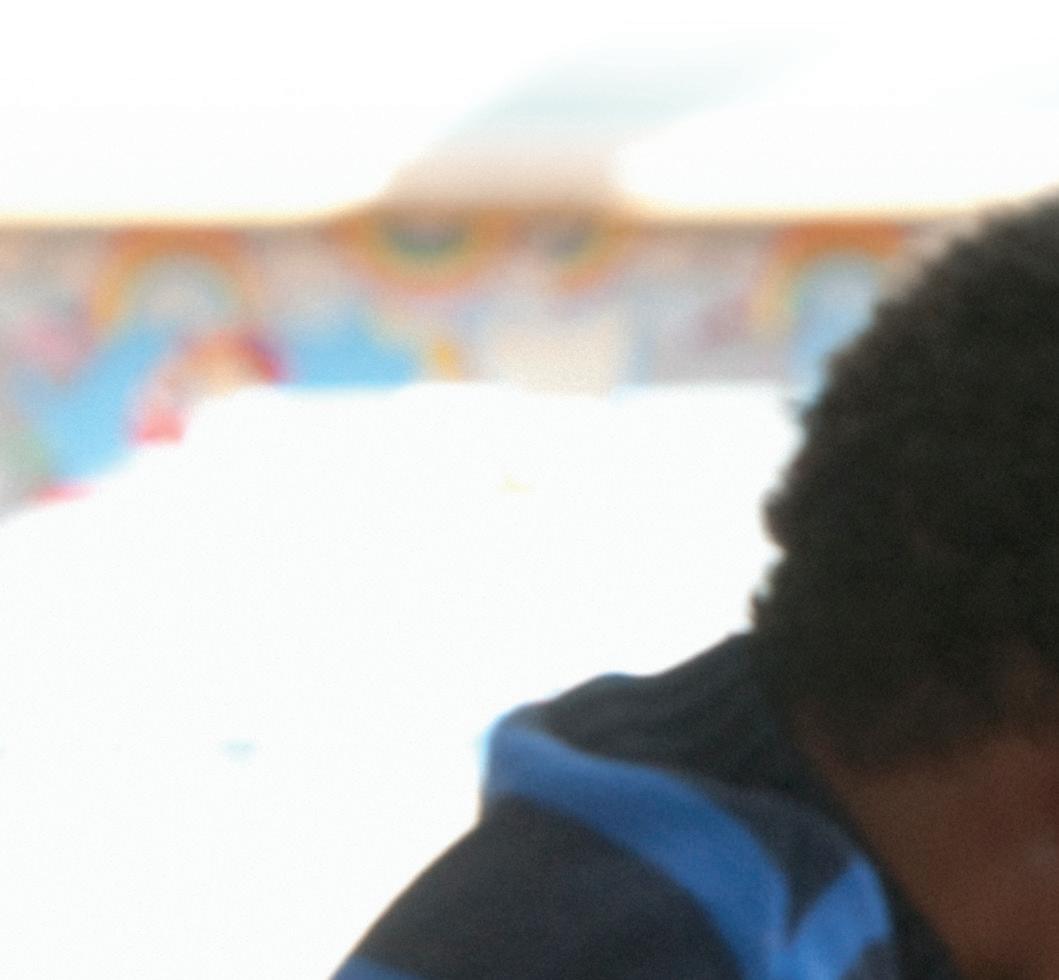
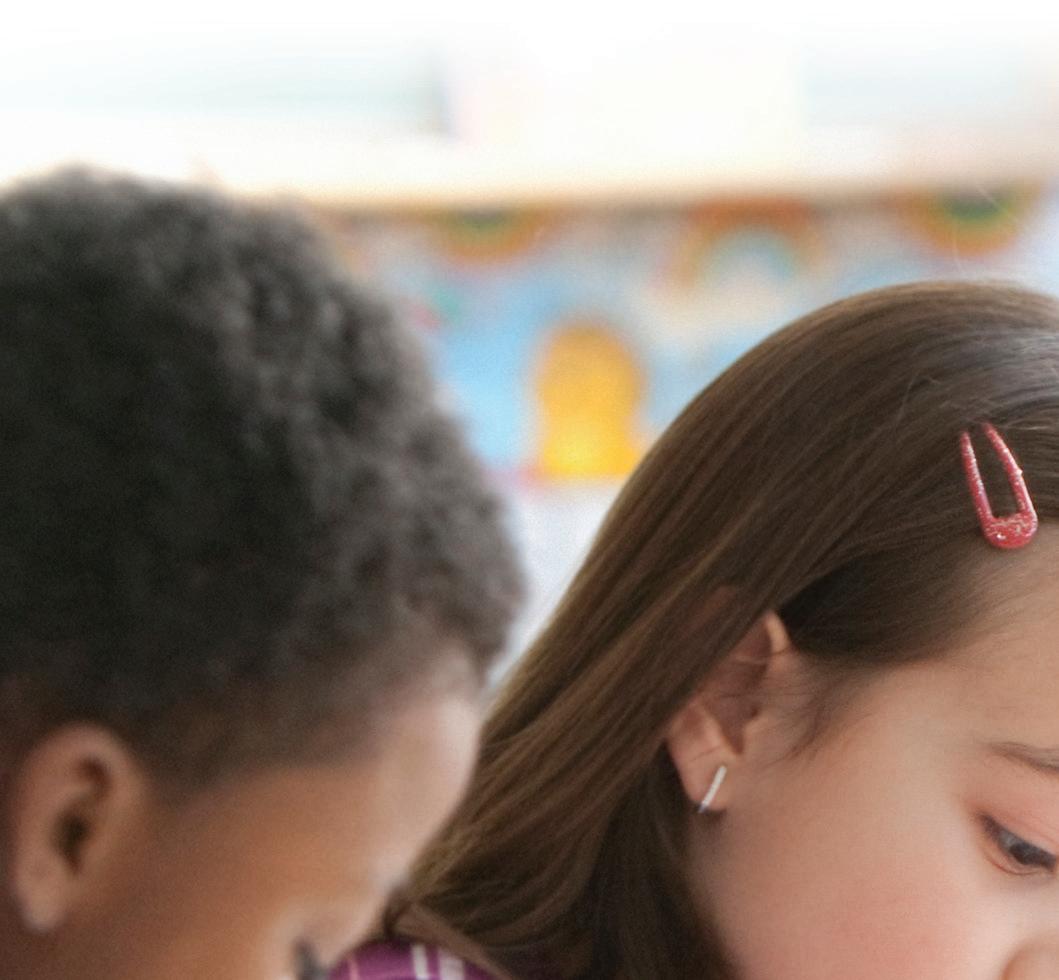
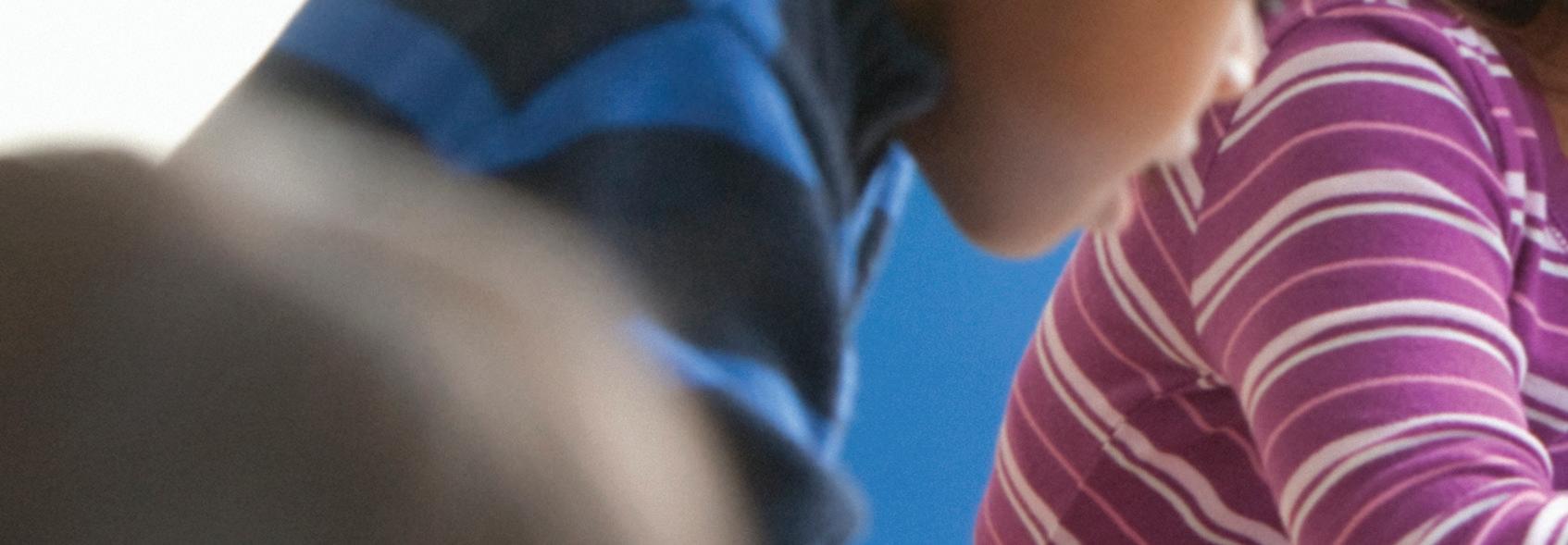
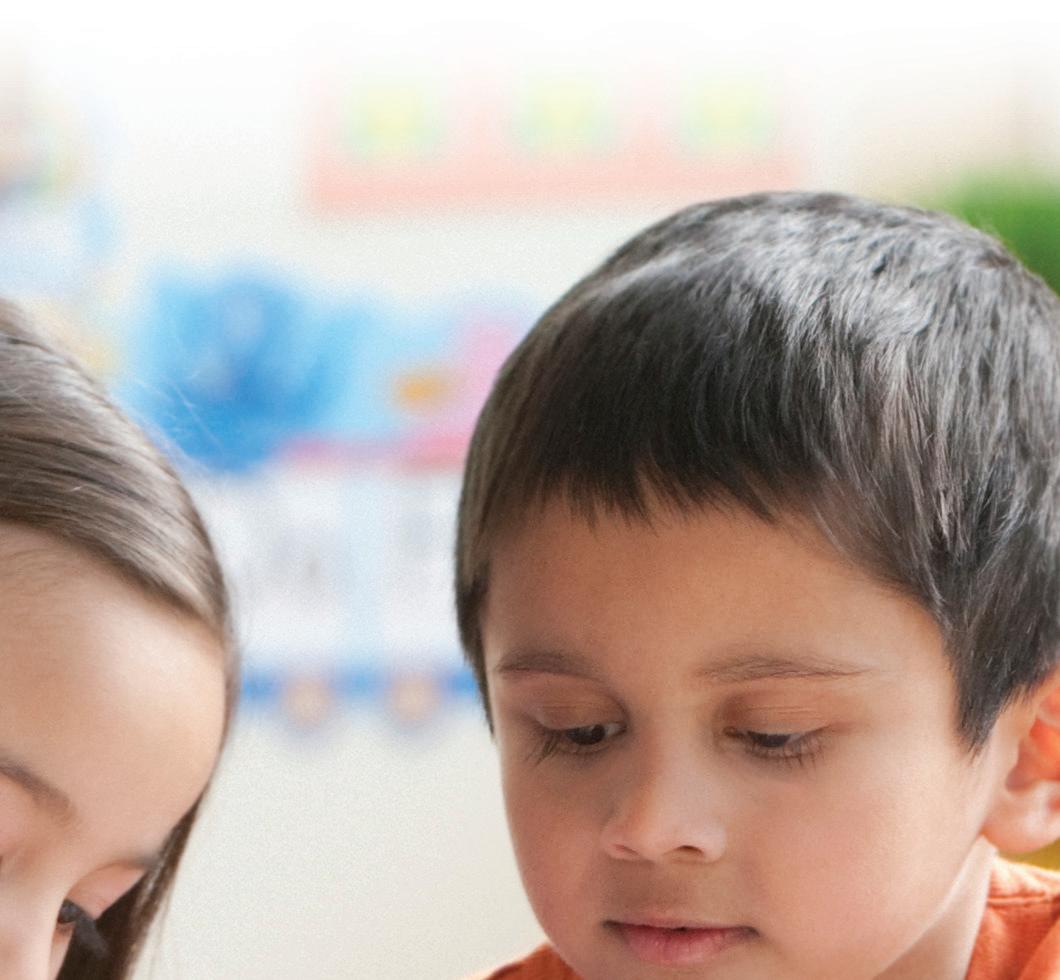
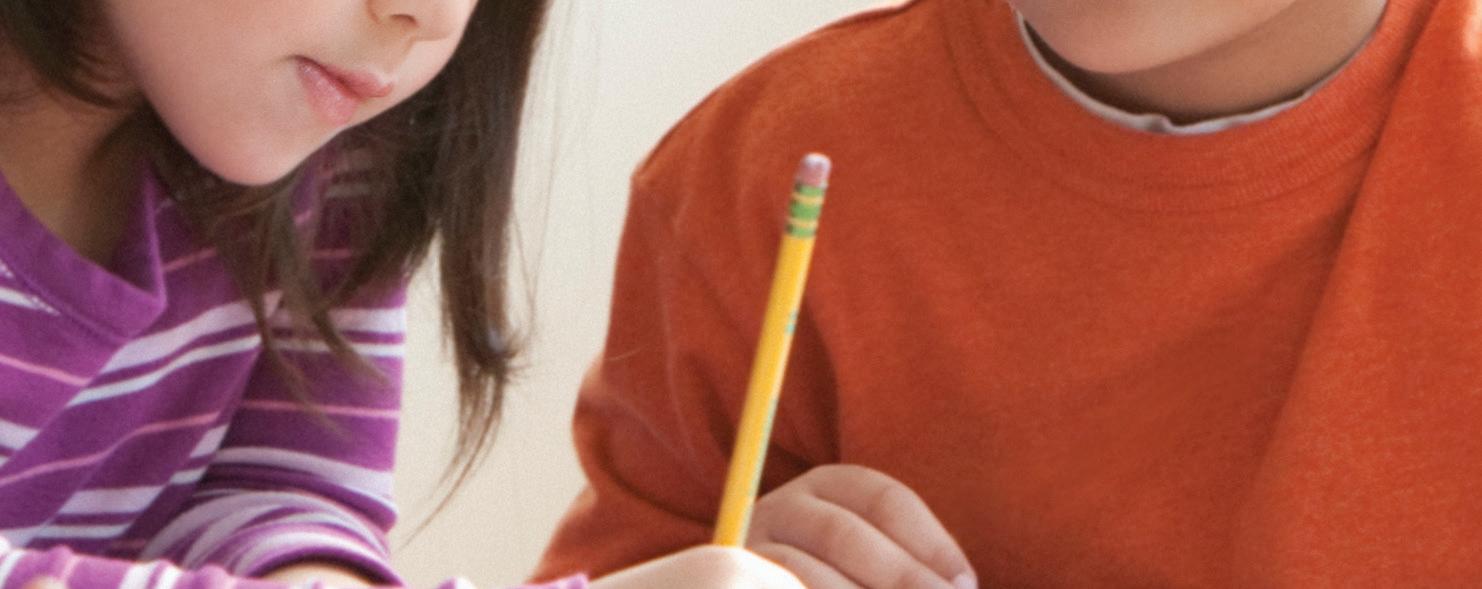
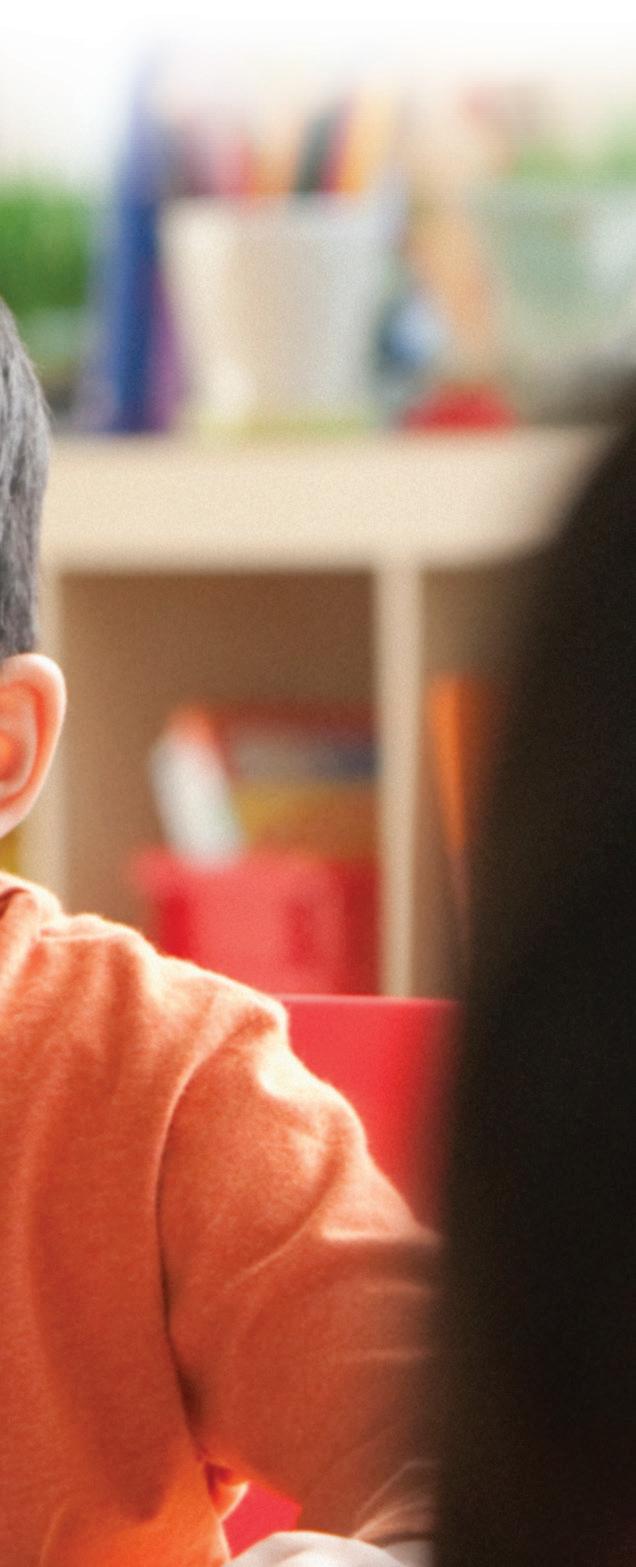
1 What can families teach us? 33
SAMPLE Original material © Cambridge University Press & Assessment 2023. This material is not final and is subject to further changes prior to publication.




CAMBRIDGE PRIMARY
Global Perspectives
Teacher’s Resource 1
Adrian Ravenscroft & Achama Mathew
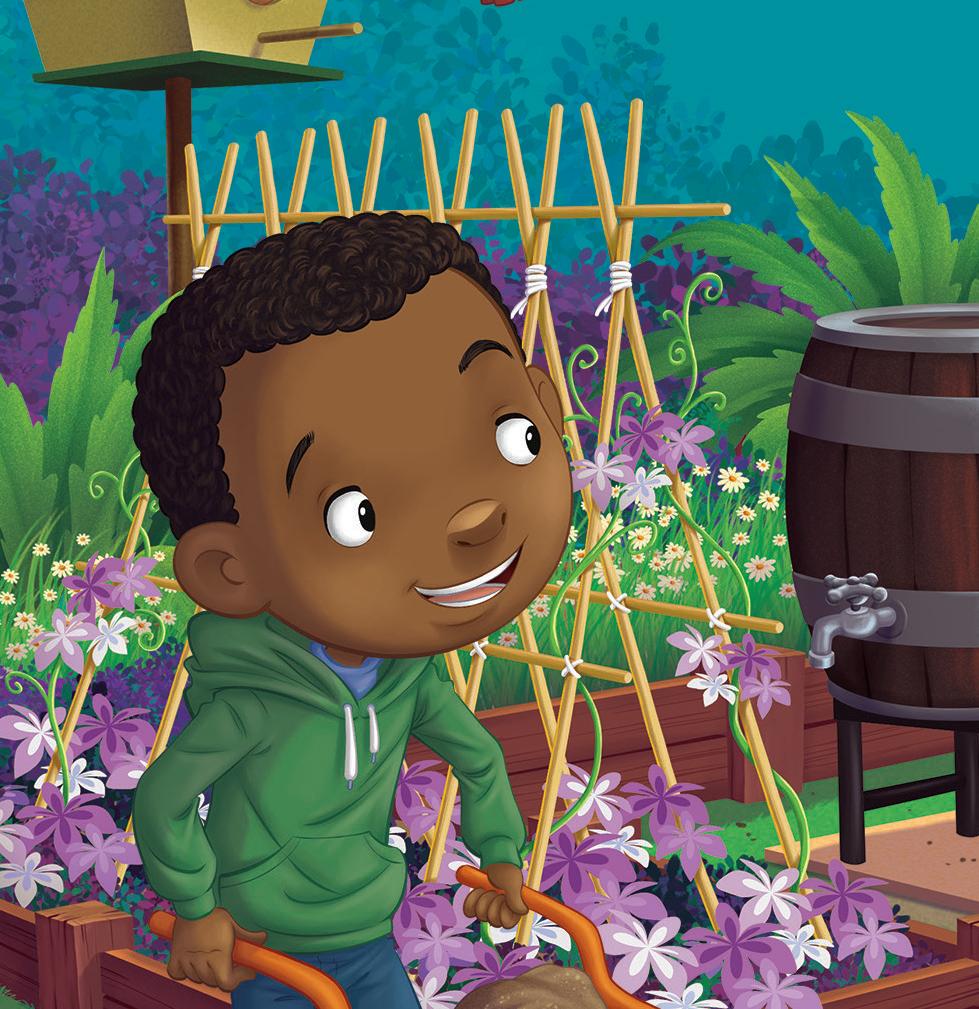

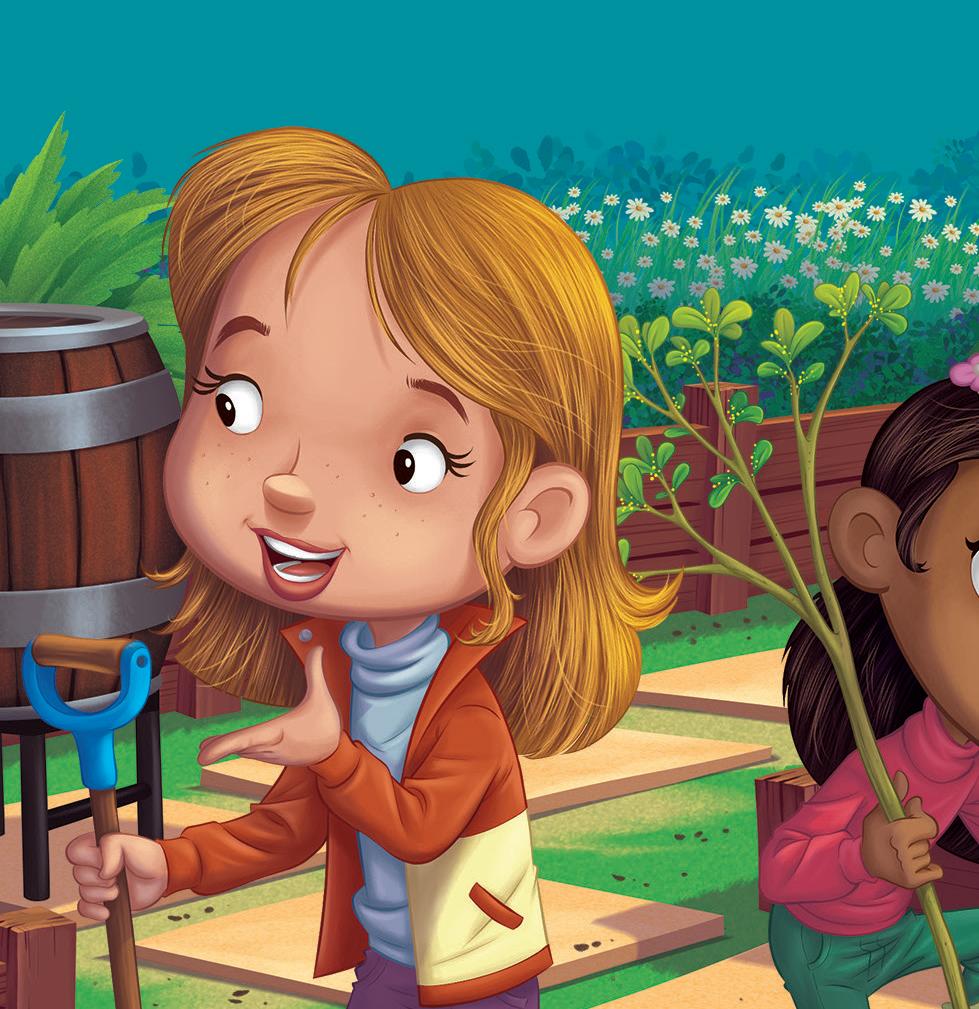


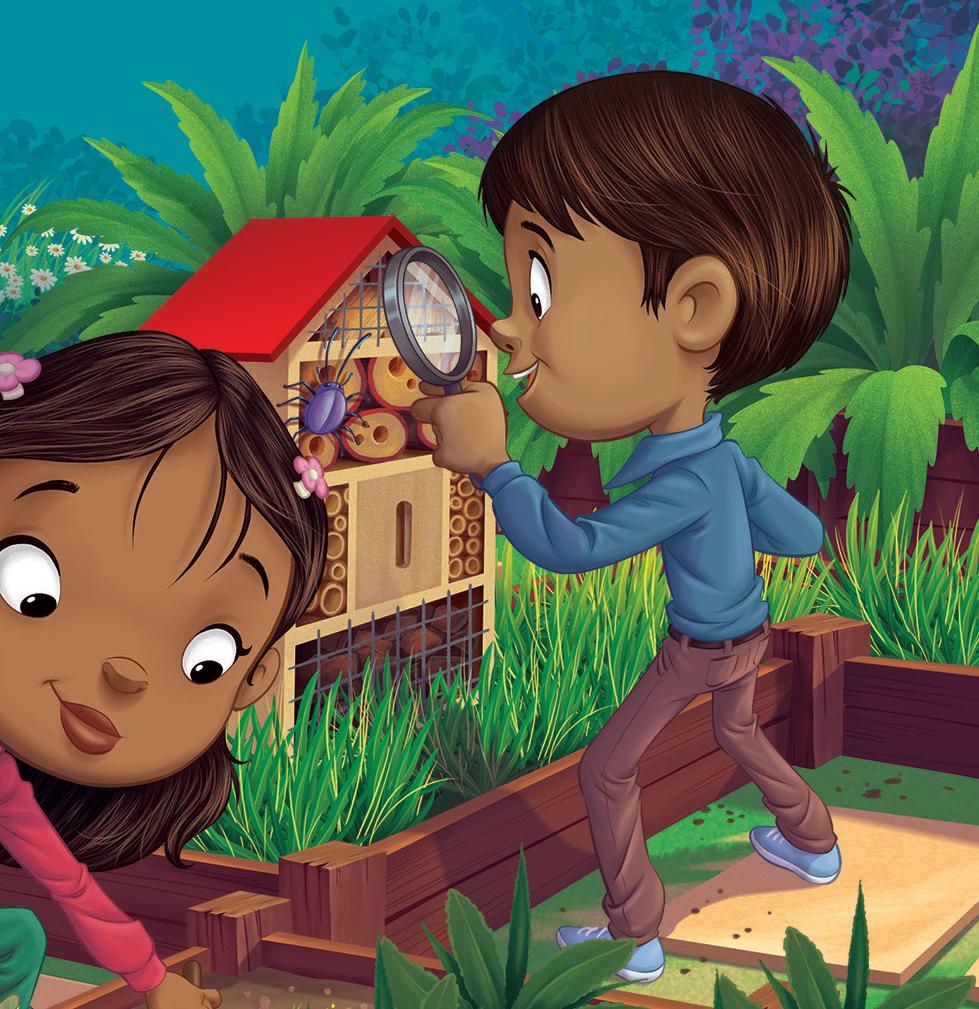
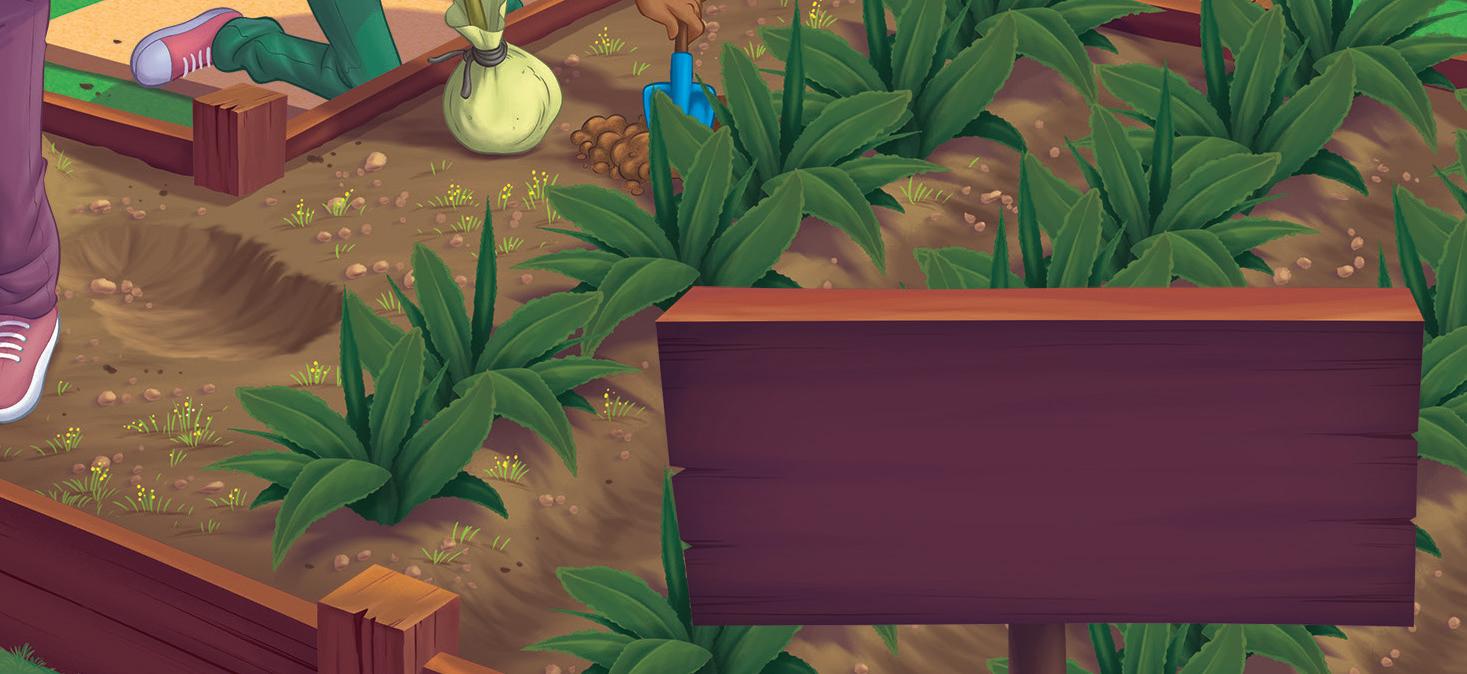
Digital Access SAMPLE Original material © Cambridge University Press & Assessment 2023. This material is not final and is subject to further changes prior to publication.
v Contents Introduction vii About the authors ix How to use this series x How to use this Teacher’s Resource xi About the curriculum framework xiv Curriculum mapping xv Approaches to teaching Cambridge Primary Global Perspectives xxii How the projects are structured xxii How the projects build on each other xxii Assessment xxiii Cross-curricular links and themes xxvi Teaching Cambridge Primary Global Perspectives when English is not the learners’ first language xxviii Developing a global perspective xxxi Transferring your skills as a teacher xxxiii Approaches to teaching and learning xxxiv Active learning xxxiv Assessment for learning xxxiv Differentiation xxxiv Language awareness xxxiv Metacognition xxxv Skills for Life xxxv Cambridge learner and teacher attributes xxxv Glossary of terms xxxvi 1 What can families teach us? 1 1.1 Who is in my family? 3 1.2 What have my family members taught me to do? 6 1.3 What can I find out in an interview? 9 1.4 What else can I find out from my family members? 12 1.5 How can we show what we have learned? 15 1.6 What did we enjoy doing? 17 SAMPLE Original material © Cambridge University Press & Assessment 2023. This material is not final and is subject to further changes prior to publication.
Digital resources
The following items are available on Cambridge GO. For more information on how to access and use your digital resource, please see inside front cover.
vi 2 What kind of garden would be best? 20 2.1 What is a garden? 23 2.2 How can I find out what children in my class think about gardens? 25 2.3 Where can I find more facts and ideas? 27 2.4 How can we make a model of a school garden? 30 2.5 How can we tell other children about our model? 32 2.6 What have we learned? 34 3 What do we know about jobs? 37 3.1 What work do people do? 40 3.2 How can I find out about jobs? 42 3.3 How can I find out more about jobs? 44 3.4 How can we do a role play about work? 47 3.5 How can we tell other children about our workplace? 49 3.6 What have we learned about jobs? 52 4 How can we save water? 55 4.1 How do we use water at school? 58 4.2 How do other people use water? 61 4.3 What do I think about saving water? 64 4.4 What different ways are there to save water? 66 4.5 How can we tell other people how to use water carefully? 69 4.6 What have we learned about sharing ideas? 71
Active learning Assessment for learning Developing learners’ language skills Differentiation Improving learning through questioning Language awareness Metacognition Skills for Life Downloadable resources, assessment guidance, worksheets and audio transcripts. Cambridge Primary Global Perspectives 1: Teacher's Resource SAMPLE Original material © Cambridge University Press & Assessment 2023. This material is not final and is subject to further changes prior to publication.
Introduction
Welcome to the Cambridge Primary Global Perspectives Teacher’s Resource 1, intended for use alongside Cambridge Primary Global Perspectives Learner’s Skills Book 1.
Being a classroom teacher is not an easy job. Children are growing up in a complex, fast-changing and interconnected world. The best teachers understand that their job is to help the children make sense of it. Cambridge Primary Global Perspectives is an innovative programme. It is designed to help you teach young children a range of key skills.
These skills have been identified as being of core importance in successfully navigating and thriving in this challenging environment. The programme identifies six key Cambridge Global Perspectives™ skills. These are: Research, Analysis, Evaluation, Reflection, Collaboration and Communication.
The opening sections of this Teacher’s Resource contain guidance about how to approach Cambridge Primary Global Perspectives. We will consider:
• how to incorporate Cambridge Primary Global Perspectives into the wider curriculum
• how to support learners for whom English is an additional language (EAL)
• how to support children with a wide range of prior attainment.
A real joy of teaching Cambridge Primary Global Perspectives to young children is that children of this age are at an early stage in the process of developing their sense of the world. They are used to doing this independently and by engaging with other children.
As educators, we want this to be a lifelong process. We take the view that the best way to develop and refine these core skills is by applying them practically.
Our materials are designed to help you structure a journey of discovery for the children you teach. The chapters of the Learner’s Skills Book are dedicated to four practical projects. Each practical project has a defined outcome – for example, producing a model garden and discussing its features, or participating in a role play about a workplace and explaining what is being done. Working towards each outcome requires learners to complete activities that give them opportunities to practise and develop all of the core skills.
The later sections of this book mirror the structure of the Learner’s Skills Book. For each project, there are sections containing teaching notes relating to each of the lessons in the Learner’s Skills Book. Detailed guidance sets out each of the activities.
Detailed notes will help teachers to plan lessons that take account of the needs of groups of learners and individuals. Shared learning outcomes are set out in child-friendly language. Suggested ‘support’ and ‘extra challenge’ activities will help teachers to carefully match teaching and learning activities and resources to support children in achieving these intended learning outcomes.
Introduction vii
Original material © Cambridge University Press & Assessment 2023. This material is not final and is subject to further changes prior to publication.
SAMPLE
There are also a range of downloadable resources available to support teaching and learning. These can be found online at http://cambridge.org/go
During the course of the four projects, the course materials will enable teachers and learners to experience a variety of approaches to teaching and learning.
We hope to support you as an effective facilitator of Cambridge Global Perspectives. We want you to show your learners where to look but not necessarily what to see. We hope you will enjoy helping them to explore new ideas in the classroom and in the community. Hopefully, you will find this process of helping learners to become empowered, reflective and engaged global citizens a rewarding one.
Cambridge Global Perspectives involves learners in learning about the world around them; the impact of global issues on their local area and different perspectives on how best to resolve these issues. You may need to involve learners in communicating with people in the wider community, conducting research off-site and exchanging ideas with learners in contrasting settings. All off-site visits must be risk assessed and carried out in accordance with relevant school health and safety policies. All communication must be conducted in line with school safeguarding and e-safety policies.
viii
Cambridge Primary Global Perspectives 1: Teacher's Resource
SAMPLE Original material © Cambridge University Press & Assessment 2023. This material is not final and is subject to further changes prior to publication.
How to use this Teacher’s Resource
CAMBRIDGE PRIMARY GLOBAL PERSPECTIVES 1: Teacher's Book
CAMBRIDGE PRIMARY GLOBAL PERSPECTIVES 1: Teacher's Book
1.1 Who is in my family?
This Teacher’s Resource contains both general guidance and teaching notes that will help you to deliver the content for Cambridge Primary Global Perspectives Stage 1.
1.1 Who is in my family?
There are teaching notes for each project in the Learner’s Skills Book. A full set of teaching notes will help you deliver each of the six lessons in the project.
LEARNING OBJECTIVES: ANALYSIS
LEARNING OBJECTIVES: ANALYSIS
1A.01 Identifying perspectives: Say something known about an issue
The notes for each project begin with an introduction, which describes the learning journey that the learners will undertake. This sets out how each of the skills will be drawn upon in the project. The introduction will also help you to structure the development of learners’ metacognitive understanding by explaining the skills developed in each lesson. It also includes a list of skills that it is useful if the learners have as they begin the project.
At the start of each lesson is a summary of the relevant Cambridge learning objectives and learning goals for the lesson. The learning objectives box shows you which objectives from the curriculum framework the lesson addresses.
The lesson learning goals feature shows you the learner-friendly goals as they are set out in the Learner’s Skills Book.
There is also a box showing which of the Cambridge learner attributes the lesson helps learners to develop. CAMBRIDGE
1A.01 Identifying perspectives: Say something known about an issue
1.1 Who is in my family?
ADDITIONAL LEARNING OBJECTIVES
SAMPLE
say the name of a family member and to identify whose family photo included member. If you think learners will have display the pictures again (without labels) ask questions such as: Whose family grandmother is this? and so on.
say the name of a family member and to identify whose family photo included member. If you think learners will have display the pictures again (without labels) ask questions such as: Whose family grandmother is this? and so on.
Who are my family members?
Who are my family members?
LEARNING OBJECTIVES: ANALYSIS
Good for: Learners to identify members own family and begin to recognise can be different.
1Rs.01 Constructing research questions: Ask basic questions about a given issue
ADDITIONAL LEARNING OBJECTIVES
Activity:
Good for: Learners to identify members own family and begin to recognise can be different.
1A.01 Identifying perspectives: Say something known about an issue
1Rs.01 Constructing research questions: Ask basic questions about a given issue
LEARNING GOALS
· I can say who is in my family.
LEARNING GOALS
Activity:
say the name of a family member and to identify whose family photo included member. If you think learners will have display the pictures again (without ask questions such as: Whose family grandmother is this? and so on.
1 Remind learners that they have about the families of Arun, Sofia whose family do they think they next? (Their own!) Ask them what they could find out about families. suggestions and discuss.
Who are my family members?
ADDITIONAL LEARNING OBJECTIVES
· I can say who is in my family.
· I can find out if we all use the same names for family members.
· I can find out if we all use the same names for family members.
1Rs.01 Constructing research questions: Ask basic questions about a given issue
LEARNING ATTRIBUTES
This lesson gives learners the opportunity to be:
LEARNING ATTRIBUTES
LEARNING GOALS
This lesson gives learners the opportunity to be:
· Confident in working with information and ideas – their own and those of others.
· I can say who is in my family.
· Confident in working with information and ideas – their own and those of others.
Resources needed
· I can find out if we all use the same names for family members.
Learners to bring a photograph or a drawing of their family members
Resources needed
LEARNING ATTRIBUTES
Learner’s Skills Book pages 8–13
This lesson gives learners the opportunity to be:
Learners to bring a photograph or a drawing of their family members
Downloadable 1.1 (photos of different kinds of families)
Learner’s Skills Book pages 8–13
Downloadable
· Confident in working with information and ideas – their own and those of others.
1.1 (photos of different kinds of families)
Starter
Starter
Resources needed
Good for: Recapping the learning about family relationships from Getting Started to help learners with the activities in this lesson
Learners to bring a photograph or a drawing of their family members
Good for: Recapping the learning about family relationships from Getting Started to help learners with the activities in this lesson
Learner’s Skills Book pages 8–13
Activity: Ask learners if they can remember the photos of Arun, Sofia and Marcus’s families. Conduct a quick quiz: say the name of the character (Arun, Sofia or Marcus) and learners have to name a member of their family who appeared in the picture.
Starter
Activity: Ask learners if they can remember the photos of Arun, Sofia and Marcus’s families. Conduct a quick quiz: say the name of the character (Arun, Sofia or Marcus) and learners have to name a member of their family who appeared in the picture.
Downloadable 1.1 (photos of different kinds of families)
Good for: Recapping the learning about family relationships from Getting Started to help learners with the activities in this lesson
Good for: Learners to identify members own family and begin to recognise can be different.
Focus attention on the picture
1 Remind learners that they have about the families of Arun, Sofia whose family do they think they next? (Their own!) Ask them what they could find out about families. suggestions and discuss. Focus attention on the picture
Activity:
Ask questions to help learners members of Arun’s family are (his his father and his mother).
Ask questions to help learners members of Arun’s family are (his his father and his mother).
1 Remind learners that they have about the families of Arun, Sofia whose family do they think they next? (Their own!) Ask them what they could find out about families. suggestions and discuss.
Focus attention on the picture
Share pictures (e.g. those on downloadable representing different kinds of different backgrounds and geographical possible) – for example, small nuclear extended families, families where grandparents or single-parent families. to identify who the people might Discuss with learners that families varied; they can be different in of people in the family or which they include.
Ask questions to help learners members of Arun’s family are (his his father and his mother).
Share pictures (e.g. those on downloadable representing different kinds of different backgrounds and geographical possible) – for example, small nuclear extended families, families where grandparents or single-parent families. to identify who the people might Discuss with learners that families varied; they can be different in of people in the family or which they include.
Ask a few learners to say who is Appreciate each learner’s contribution.
Ask learners to draw a picture members who live with them (in a separate sheet of paper). Alternatively advance notice – they could bring home to stick in their book. They the name of each family member the picture.
Ask a few learners to say who is Appreciate each learner’s contribution.
Share pictures (e.g. those on downloadable representing different kinds of different backgrounds and geographical possible) – for example, small nuclear extended families, families where grandparents or single-parent families. to identify who the people might Discuss with learners that families varied; they can be different in of people in the family or which they include.
Ask learners to draw a picture members who live with them (in a separate sheet of paper). Alternatively advance notice – they could bring home to stick in their book. They the name of each family member the picture.
Ask a few learners to say who is Appreciate each learner’s contribution.
2 Share a personal example of a not live with you (e.g. my brother with us, he lives in...). Ask learners
2 Share a personal example of a not live with you (e.g. my brother with us, he lives in...). Ask learners
Ask learners to draw a picture members who live with them (in a separate sheet of paper). Alternatively advance notice – they could bring home to stick in their book. They the name of each family member
How to use this Teacher’s Resource xi
PRIMARY GLOBAL PERSPECTIVES 1: Teacher's Book
Activity: Ask learners if they can remember the photos
4
Original material © Cambridge University Press & Assessment 2023. This material is not final and is subject to further changes prior to publication.
functional, recreational).
· Different people enjoy gardens for different purposes at different times. they have.
2.1 What is a garden?
A list of resources required – including the relevant pages from the Learner’s Skills Book, downloadable resources, and audio and video material – is provided for each lesson.
LEARNING OBJECTIVES: ANALYSIS
1A.01 Identifying perspectives: Say something known about an issue
LEARNING GOALS
· I can say what I know about gardens
The teaching notes for each lesson include an idea for a Starter activity. This provides a way of activating learners’ prior understanding. Suggestions are also given here about how you can conduct some initial formative assessment and identify any misunderstandings that might exist. They also allow you to work out which learners might need additional support to meet the goals – or further challenge.
LEARNING ATTRIBUTES
This lesson gives learners the opportunity to be:
· Confident in working with information and ideas – their own and those of others
LEARNING ATTRIBUTES
LEARNING ATTRIBUTES
This lesson gives learners the opportunity to be:
his father and his mother).
Ask questions to help learners members of Arun’s family are his father and his mother).
Starter
The activities in the Learner’s Skills Book are set out in turn with suggested ways of working.
Good for: Formative assessment of the learners’ understanding of the issue before any input. Learners who consistently point appropriately may well need further challenge. Learners who consistently point incorrectly may well need additional support.
What do I call my adult family members?
Good for: Exploring names and different way in which family members are addressed
What do I call my adult family members?
Suggested answers and/or worked examples are provided to help you model what is expected or give good feedback. This serves as an example of what success looks like. Remember though that this is a skills-based course and a variety of successful answers are frequently acceptable.
Activity:
Activity: Tell the learners that we will be finding out all about things that people like to do in gardens. Name an activity – for example, planting flowers. Is this something that people like to do in their gardens? Ask learners to: Point to the window if you think ‘yes’. Point to the door if you think ‘no’. Point to the ceiling if you
Good for: Exploring names and different way in which family members are addressed
Activity:
1 Introduce the session by saying that it is time to discover something interesting about our classmates’ families.
1 Introduce the session by saying that it is time to discover something interesting about our classmates’ families.
In the Differentiation section, you will find advice on providing extra support or extra challenge in response to the attainment demonstrated by your learners’.
Encourage learners to read the speech bubbles. Draw attention to and repeat the key words: Marcus – grandmother – Ada – Nanna, Arun – father – Arjun – Papa. Ask learners to point in the illustration and speech bubble. To check understanding, ask questions: What is Marcus’s grandmother’s name? What does he call her? What is Arun’s father’s name? What does he call him?
Encourage learners to read the speech bubbles. Draw attention to and repeat the key words: Marcus – grandmother – Ada – Nanna, Arun – father – Arjun – Papa. Ask learners to point in the illustration and speech bubble. To check understanding, ask questions: What is Marcus’s grandmother’s name? What does he call her? What is Arun’s father’s name? What does he call him?
Give one or two examples (real or invented) based on your own family – for example, My father’s name is Silvio but I call him Dad. My grandmother’s name was Maria but I called her Nonna. Ask some more confident learners to share examples of their own with the class.
Give one or two examples (real or invented) based on your own family – for example, My father’s name is Silvio but I call him Dad. My grandmother’s name was Maria but I called her Nonna. Ask some more confident learners to share examples of their own with the class.
Play a quick game: each learner names a family member. They say their given name and follow it by what they call them – for example, father, Arjun, Papa. Learners can choose to name any family member. (This way, different family relationships can be considered).
Demonstrate how to record these answers in a very simple table (like the one in the Learner’s Skills Book).
Play a quick game: each learner names a family member. They say their given name and follow it by what they call them – for example, father, Arjun, Papa. Learners can choose to name any family member. (This way, different family relationships can be considered).
Demonstrate how to record these answers in a very simple table (like the one in the Learner’s Skills Book).
Explain to the learners that this is called a table.
Family memberWhat I call them
· Confident in working with information and ideas – their own and those of others.
This lesson gives learners the opportunity to be:
· Confident in working with information and ideas – their own and those of others.
Resources needed
Resources needed
Learners to bring a photograph or a drawing of their family members
Learners to bring a photograph or a drawing of their family members
Learner’s Skills Book pages 8–13
think ‘maybe’. Repeat with a range of activities relevant to your setting. Choose some that are almost certainly not garden activities (e.g. ‘using a vacuum cleaner’) and some that are (e.g. cutting grass, growing oranges, sitting having a drink, playing with a ball).
Share pictures (e.g. those on downloadable representing different kinds of different backgrounds and geographical possible) – for example, small extended families, families where grandparents or single-parent to identify who the people might Discuss with learners that families varied; they can be different in of people in the family or which they include.
Share pictures (e.g. those on downloadable representing different kinds of different backgrounds and geographical possible) – for example, small extended families, families where grandparents or single-parent to identify who the people might Discuss with learners that families varied; they can be different in of people in the family or which they include.
Learner’s Skills Book pages 8–13
Downloadable 1.1 (photos of different kinds of families)
Downloadable 1.1 (photos of different kinds of families)
Resources needed
Starter
Learner’s Skills Book pages 00–00
Starter
Ask a few learners to say who Appreciate each learner’s contribution.
Downloadable 2.1 (picture frame and space for learners to write about a garden they know)
Good for: Recapping the learning about family relationships from Getting Started to help learners with the activities in this lesson
Downloadable 2.8 (model dialogue)
Good for: Recapping the learning about family relationships from Getting Started to help learners with the activities in this lesson
Paper/a notebook for drawing a garden
Activity: Ask learners if they can remember the photos of Arun, Sofia and Marcus’s families. Conduct a quick quiz: say the name of the character (Arun, Sofia or Marcus) and learners have to name a member of their family who appeared in the picture.
Activity: Ask learners if they can remember the photos of Arun, Sofia and Marcus’s families. Conduct a quick quiz: say the name of the character (Arun, Sofia or Marcus) and learners have to name a member of their family who appeared in the picture.
Audio recording GP1_aud_4 with transcript of Shazia, Afua and Romario talking about their gardens
If possible, photos of places local to your setting (and which learners may be familiar with) where people grow plants
4
What can we do in a garden?
Good for: Learners to gain confidence in talking about the issue of gardens; their similarities and differences.
1 What can families teach us?
Activity: Ask learners to work with a partner. They should look at the three photos and discuss the four questions together. Take feedback as a class.
Differentiation
babysitters, day-care staff, neighbours and so on. What names do they have for these people? Learners write their own answers in the Learner’s Skills Book.
1 What can families teach us?
Ask a few learners to say who Appreciate each learner’s contribution. Ask learners to draw a picture members who live with them (in a separate sheet of paper). Alternatively advance notice – they could bring home to stick in their book. They the name of each family member the picture.
Ask learners to draw a picture members who live with them (in a separate sheet of paper). Alternatively advance notice – they could bring home to stick in their book. They the name of each family member the picture.
2 Share a personal example of a not live with you (e.g. my brother with us, he lives in...). Ask learners 4
2 Share a personal example of a not live with you (e.g. my brother with us, he lives in...). Ask learners
Give support by: Sharing the dialogue in downloadable 2.8 in which the characters model this discussion. Can they spot things that the have missed?
babysitters, day-care staff, neighbours and so on. What names do they have for these people? Learners write their own answers in the Learner’s Skills Book.
Answers and formative assessment: Answers will depend on each learner’s individual family and circumstances. Check whether learners are able to identify and share the name of a family member and explain how they are addressed.
Differentiation:
Answers and formative assessment: Answers will depend on each learner’s individual family and circumstances. Check whether learners are able to identify and share the name of a family member and explain how they are addressed.
Differentiation:
Give support by helping learners with spelling (e.g. telling learners to look for spellings of family relationships from the pictures in Getting Started or writing out the common ones on the board for learners to copy). If learners have specific family names that they would like to include, suggest that they ask for help from their family at home.
Give support by helping learners with spelling (e.g. telling learners to look for spellings of family relationships from the pictures in Getting Started or writing out the common ones on the board for learners to copy). If learners have specific family names that they would like to include, suggest that they ask for help from their family at home.
Give extra challenge by asking learners to say why they think we have different ways of addressing our family members. Explore how languages cause us to address family members using different vocabulary.
Give extra challenge by asking learners to say why they think we have different ways of addressing our family members. Explore how languages cause us to address family members using different vocabulary.
Do we all have the same names for our family members?
Good for: Identifying differences and similarities in the way in which we address older family members or people.
Do we all have the same names for our family members?
Good for: Identifying differences and similarities in the way in which we address older family members or people.
Activity: Divide learners into small groups of three or four. Tell them it is Listen and Share Time. Remind learners that families can be different, and each person in the group may have different people in their families. Tell learners to talk to the other learners in their group. They should tell them what they have written in their chart.
Father Dada
Explain to the learners that this is called a table.
Family memberWhat I call them
Father Dada
Look together at Marcus and Arun’s speech bubbles in the Learner’s Skills Book. Ask a learner to add the information about Marcus’s family (and another learner to do the same for Arun’s family)
Activity: Divide learners into small groups of three or four. Tell them it is Listen and Share Time. Remind learners that families can be different, and each person in the group may have different people in their families. Tell learners to talk to the other learners in their group. They should tell them what they have written in their chart.
Learners should listen to each other carefully. Do others in the group use the same or different names for their
Learners should listen to each other carefully. Do others in the group use the same or different names for their family members? Tell learners to record their findings in the Learner’s Skills Book – they should try to write one family member where everyone in the group uses the
xii
Cambridge Primary Global Perspectives 1: Teacher's Resource
members of Arun’s family are
23
Look together at Marcus and Arun’s speech
SAMPLE Original material © Cambridge University Press & Assessment 2023. This material is not final and is subject to further changes prior to publication.
holiday, I like to go and see places ➞ What kind of places do you like to see?)
Answers and/or formative assessment: Open
Can learners identify which questions will get them the kind of information they are looking for? (Can they adapt the questions or come up with alternatives if necessary?) Can they explain why they have chosen (or not chosen) certain questions?
What did we learn from the interview?
1 Review with learners orally what they did in the interview. Ask learners: Who did we interview?
review the interview process. (Ensure that as many learners as possible have an opportunity to respond to at least one question.)
Are they able to evaluate what they learned: What was interesting? What went well/not so well? What they could do differently?
Plenary
Activity: Display the following statements about the interview with the visitor (or adapt them to match what you did):
What did we find out? Use the tick list in the book as a memory jogger, or provide a modified version if your interview covered very different topics from these. If learners worked in smaller groups to conduct the interview, ensure that they are with the same learners during this review.
The Plenary section contains guidance about how to help learners reflect on what has been learned. Where appropriate, suggestions are provided for how learners can further develop and reinforce their understanding through learning outside the classroom. Suggestions are provided for how you might communicate with parents to promote home learning.
2 Allow learners time to answer the questions independently. Then use questions such as the following to have a discussion that will help the learners reflect on the process of preparing and conducting the interview.
At the end of each project is a Taking it further section in which you will find suggestions for how you can enrich learning.
Why did you like about doing the interview? Why did you not like about doing the interview? What did you find out that was interesting? Did you find it easy or difficult to do the interview? Why? What things should we do differently when we do an interview again?
Where appropriate, links between the teaching and learning in these materials and suggested in the Taking it further section of each project.
12
2
Home learning ideas
Reflection: Refer learners to the success criteria in their books (I can talk about what I liked.) See page 00 for a suggested procedure.
3 We recorded the answers by __________ [e.g. videoing the interview, taking notes, using an audio recorder].
Home Learning Ideas
Activity: Learners interview a family member (or other appropriate adult) at home. Ask learners to share orally who they will interview. Ask them to think about: What five questions will they ask? Whose help will they ask for at home to record the interview?
Activity: Recap all home learning ideas that were done through the project with the learners in class Ask learners to say which home learning ideas they liked and
4 We practised asking the question clearly. Tell learners that you have written what they did but in the wrong order. Ask them to put the four statements in the correct order. Ask: What can we find out when we interview somebody? Is it a good way to find out information? Why/why not?
Answers and/or formative assessment: Correct sequence = 2, 4, 1, 3.
Taking it further
Reflection: Refer Leaners to the success criteria in their books (I can ask questions to find out about my family members’ lives.) See page 00 for a suggested procedure.
LEARNING OBJECTIVES: REFLECTION
This project will have helped learners to explore the different kinds of families that there are and the role that families play in their growing up years. The project also has the potential to build closer and fruitful ties between the school and the families of the learners.
1Rf.03 Personal perspectives: Talk about what has been learned during an activity, with support
LEARNING GOALS
· I can learn stories, games and interesting facts from older people
1 Learning from older
1 Learning from older
why. Learners can share the responses they begin the next project.
Home–school link: Combine all the into a single document and share with the project on families has been concluded. about any highlights and interesting that emerged during the project. Thank their support.
Home–school link: If the school has that is shared with parents or for parents access, ask them to send snippets of was recorded. Alternatively, they could detailing their observation about the the interview at home. If appropriate, information gathered from the parents or link to share it.
1.4 What else can I find out from my family members?
Resources needed
in the lives of learners and for the support to the school.
Learner’s Skills Book pages 00–00 Audio recording GP1_aud_2 with transcript interviewing his grandmother
Starter
Good for: Learners to explore interactions members at social events, what happens who they meet or similar.
Learners who have successfully completed will have developed a range of skills that would enable them to attempt International Primary Global Perspectives ‘Growing and growing up’ and ‘Learning with enhanced confidence. Register to access free supporting resources, including assessment guidance, worked examples and activity templates, through Cambridge GO – the home for all your Cambridge digital content. Visit cambridge.org/go
LEARNING ATTRIBUTES
This lesson gives learners the opportunity to be:
· Engaged intellectually and socially, ready to make a difference
Note: This lesson provides examples for learners of what they might be able to learn from the adults who are close to them. They learn about a festival celebrated by the family (from looking at an old photo), an old family story and a simple game. It is intended that learners then find out about and share similar information, stories or games from their own families/care givers, so you will need to communicate with the relevant adults to arrange this. (See Home Learning ideas below.) Depending on how you are organising your time spent on this project, you may ask learners and their families to choose what they would like to share after the whole lesson; alternatively, you could work on the lesson section by section, asking families to share information about a festival/a story/a game after each section.
Activity: Introduce this session by asking questions:
· Who can tell me about a party they their family?
· Why did your family have a party?
· Who came for the party?
· What did you do?
· What did you like?
Take all the responses from the learners. that they are going to spend some time a special kind of party that Arun learned grandmother. Tell them the party is anyone been to a festival? Do they know
What can we find out about festival?
Good for: Learners to explore how festivals celebrated, what family members do also the significance of family celebrations.
Activity:
1 Read the text in the book together. Arun, Zara and Sofia are going found out from the older people
How to use this Teacher’s Resource xiii
to the learners’ responses to questions asked them to
Original material © Cambridge University Press & Assessment 2023. This material is not final and is subject to further changes prior to publication.
SAMPLE
Original material © Cambridge University Press & Assessment 2023. This material is not final and is subject to further changes prior to publication.
SAMPLE
1 What can families teach us?
Introduction
In this project, learners explore what they can learn from older family members, drawing on their life experience and knowledge of family celebrations, stories or games. At the end of the project, the learners create a display to summarise their findings, and they share what they have found out through talking, writing or drawing, according to their preference.
To start with, learners consider who is in their family, and the different names that these family members are called by. They then think about what these family members have taught them. As they progress through this project, learners gather information from older family members, interviewing an older person to find details about their childhood (Lesson 3 Research). They then compare the information shared by their classmates, and compare their own lives with the lives of the older members of their family when they were children (Lessons 4 and 5 Analysis). All through the project, the learners respond to questions asked by the teacher, participate in discussions and present a display to share what they have learned from older family members (Communication).
Towards the end of the project, the learners have the opportunity to reflect on what they have learned from older members of the family, how their lives are different and what they have learned and enjoyed while doing this project; later, they reflect on their own learning in the project and in particular on what they did or did not enjoy doing (Lessons 5 and 6 Reflection). Learners also have the opportunity, throughout, to collaborate with their partners when they share information on what they call older family members, or on the things that they have learned from older members of the family (Collaboration). (At the end of the interview, learners discuss the process of the interview and evaluate whether an interview is a reliable source for information).
As learners advance through the project, they will mainly have opportunities to develop their personal perspective when they share their findings and discover the personal perspectives of their classmates. The perspectives of learners can be broadened to the global perspective when they read about the experiences of other learners and their family members who live in different parts of the world from the stories, information and the audio recording shared in the Learner’s Skills Book.
It is useful for teachers to acknowledge that the learners’ experiences of families can be varied and diverse. Teachers must ensure that all learners feel comfortable to share about their families. The vocabulary used by the teacher to talk about family members and relationships must be sensitive to differences and help learners to welcome and respect the heterogeneous nature of families. At all times, the teacher must help learners to identify older members who are trusted and play a role in contributing to their lives, growth and development.
The project opens up extensive opportunities for input from the learners’ families or care givers, and this will obviously be easier if you already have close, cooperative links with them. In the project, you will need to arrange a class visit from a grandparent (ideally) or another older person (or even a school staff member) who is willing to be interviewed about their earlier life. In addition, you will need to ask for help from the parents/care givers in three ways:
· Talking to the learners about who is in their family and where they live
· Allowing one family member to be ‘interviewed’, answering the learners’ (prepared) questions about their childhood
1
Original material © Cambridge University Press & Assessment 2023. This material is not final and is subject to further changes prior to publication.
SAMPLE
· Providing a suitable story, anecdote, game, song or similar from their own childhood, that the learners could then share with the class.
You will need to be flexible in planning the project to take account of the diverse nature of (and varying levels of) input from the families.
Cross-curricular links and themes.
This project lends itself particularly well to integration with theme-based learning on the family, including the understanding of the importance of love, security and stability.
The theme of families and learning developed throughout this project builds understanding relevant to the UN Sustainable Development Goal 4: Ensure inclusive and equitable quality education and promote
lifelong learning opportunities for all. This means ensuring access to quality education and considering the importance of effective home–school partnerships to this aim. Building understanding of what they learn from their home and community can be used to develop learner’s understanding that they have a number of rights under the UN Convention on the Rights of the Child. As teachers, being aware of these rights helps us to understand the significant role that families and other adults can play in the life of a learner.
· Article 5: You have the right to be given guidance by your parents and family.
· Article 9: You have the right to live with your parents, unless it is bad for you.
· Article 18: You have the right to be brought up by your parents, if possible.
Learners have opportunities to apply their knowledge and understanding of, and skills in:
Reading skills• Reading and listening to a range of family-themed books, drawing on background information and vocabulary provided
• Making links from their reading to their own experiences of sharing stories with family members
• Demonstrating their understanding of explicit meaning in text provided about the experiences and expertise of older people.
Writing skills
Speaking and listening skills
• Selecting and developing content appropriate to conveying their understanding of family stories, games, festivals or particular expertise
• Listening to others (learners and adults) and responding appropriately
• Asking and listening carefully to questions
• Listening to and giving instructions
Before beginning work on this project, it would be helpful if lear ners have knowledge of or have had previous experience of:
• Who their family members are, where they are located and the roles they play within the family
• Being able to identify who their ‘trusted adults’ are both within their family and wider circles
• Reading simple words using phonic and sight word knowledge
• Writing words and simple sentences (with assistance if required)
• Using drawing to illustrate their thoughts and ideas.
Assessment focus
The focus skill for this project is Communication. The following downloadables will support you with assessing learners’ attainment against the curriculum framework:
• Downloadable 1.6 (Assessment guidance sheet: Communication)
• Downloadable 1.7 (Assessment record sheet: Communication)
For a general introduction to the approach to assessment in this course, see page xxiii.
2
Primary Global Perspectives
Cambridge
1: Teacher's Resource
Original material © Cambridge University Press & Assessment 2023. This material is not final and is subject to further changes prior to publication.
SAMPLE
1 What can families teach us?
Getting started
Good for: Setting the tone of the project; helping learners to identify relationships within their own family by looking at examples within pictures of other people’s families; recapitulating the terms used to refer to family members.
Activity:
1 Do this activity as a class. Display or draw attention to the three ‘photographs’ (Learner’s Skills Book page 10–11) and ask learners to look at them in turn. Introduce the four characters – Zara, Sofia, Arun and Marcus – explaining that the learners will meet these characters a lot throughout the book. Ask who the other people in each photo might be. Why do they think so? Support learners as necessary with words that describe relationships in a family: father, mother, grandfather, grandmother, aunt, uncle, cousin and so on.
Ask the learners what the people in each picture are doing. When discussing the ‘photos’ of Sofia and Marcus’s families, bring out the theme of older people teaching younger people by asking appropriate questions. With regard to Sofia’s family, you might ask: What is Grandpa doing? What is Sofia doing? Do you think she knows how to cook? How is she learning to cook? For Marcus’s family,
1.1 Who is in my family?
LEARNING OBJECTIVES: ANALYSIS
1A.01 Identifying perspectives: Say something known about an issue
1A.02 Interpreting data: Talk about infor mation recorded in pictograms or graphic organisers
ADDITIONAL LEARNING OBJECTIVES
1Rs.01 Constructing research questions: Ask basic questions about a given issue
you could ask: What is Marcus doing? What do you think Grandma is saying to Marcus? Do your family show you how to do things?
2 Broaden the discussion to talk more generally about the kinds of things learners like doing at home with their own family or care givers.
Answers: This will depend on the learner’s prior experience and their interests. It is useful for the rest of the project to draw out some of the following:
· Families vary greatly. We cannot assume that other people’s families will be like ours.
· We can learn a lot of things by spending time with the older people around us.
Differentiation:
Give support by showing more pictures either from books or on slides to give learners more visual input in terms of different kinds of families. You can also refer to familiar stories, or stories that the learners have encountered in either their textbooks, library books or similar. Pictures that show families from different parts of the world can help learners to talk and share ideas about all kinds of families from all types of backgrounds and geographical locations.
LEARNING GOALS
· I can say who is in my family.
· I can find out if we all use the same names for family members.
LEARNING ATTRIBUTES
This lesson gives learners the opportunity to be:
· Confident in working with information and ideas – their own and those of others.
3
Original material © Cambridge University Press & Assessment 2023. This material is not final and is subject to further changes prior to publication.
SAMPLE
Resources needed
Learners to bring a photograph or a drawing of their family members
Learner’s Skills Book pages 12–15
Downloadable 1.1 (photos of different kinds of families)
Starter
Good for: Recapping the learning about family relationships from Getting Started to help learners with the activities in this lesson
Activity: Ask learners if they can remember the photos of Arun, Sofia and Marcus’s families. Conduct a quick quiz: say the name of the character (Arun, Sofia or Marcus) and learners have to name a member of their family who appeared in the picture. Alternatively, say the name of a family member and learners have to identify whose family photo included that family member. If you think learners will have forgotten, display the pictures again (covering up the labels) as you ask questions such as: Whose family is this? Whose grandmother is this? and so on.
Who are my family members?
Good for: Learners to identify members of their own family and begin to recognise that families can be different.
Activity:
1 Remind learners that they have been finding out about the families of Arun, Sofia and Marcus; whose family do they think they will find out about next? (Their own!) Ask them what sort of things they could find out about families. Note down their suggestions and discuss.
Focus attention on the picture of Arun’s family. Ask questions to help learners identify who the members of Arun’s family are (his sister, his uncle, his father and his mother).
Share pictures (e.g. those on downloadable 1.1) representing different kinds of families (from different backgrounds and geographical areas, if possible) – for example, small nuclear families, extended families, families where learners live with grandparents or single-parent families. Ask learners to identify who the people might be in each family.
Discuss with learners that families are different and varied; they can be different in terms of the number of people in the family or which family members they include.
Ask a few learners to say who is in their family. Appreciate each learner’s contribution. Ask learners to draw a picture of the family members who live with them (in their book or on a separate sheet of paper). Alternatively – with advance notice – they could bring in a photo from home to stick in their book. They should then write the name of each family member on or just below the picture.
2 Share a personal example of a relative who does not live with you (e.g. my brother doesn’t live with us, he lives in...). Ask learners if they have similar examples to share. You could discuss whether the relative lives nearby or far away in a completely different town or even a different country. Tell learners to write the names of some family members who do not live with them. They should also write where those relatives live, if they know. (You could ask them to find out details at home from their parents/care givers and report back in a later lesson). If required, help learners with spellings of the names that they would like to write. Ask learners to share their answers with their partners.
Answers and formative assessment: Each learner’s answer will be based on the type of family they come comes from. Check whether learners are able to describe their family and say who the family members are.
Differentiation:
Give support by helping learners with spelling (e.g. telling learners to look for spellings of family relationships from the pictures in Getting Started or writing out the common ones on the board for learners to copy). If learners have specific family names that they would like to include, suggest that they ask for help from their family at home.
Give extra challenge by asking learners to compare their family with Arun’s family. Can they identify how their family is similar or different? Which family members are there or not there? Also ask learners to identify who is older than them or younger than them.
4 Cambridge Primary Global Perspectives 1: Teacher's Resource
Original material © Cambridge University Press & Assessment 2023. This material is not final and is subject to further changes prior to publication.
SAMPLE
What do I call my adult family members?
Good for: Exploring names and different way in which family members are addressed
Activity:
1 Introduce the session by saying that it is time to discover something interesting about our classmates’ families.
Encourage learners to read the speech bubbles. Draw attention to and repeat the key words: Marcus – grandmother – Ada – Nanna, Arun – father – Arjun – Papa. Ask learners to point in the illustration and speech bubble. To check understanding, ask questions: What is Marcus’s grandmother’s name? What does he call her? What is Arun’s father’s name? What does he call him?
Give one or two examples (real or invented) based on your own family – for example, My father’s name is Silvio but I call him Dad. My grandmother’s name was Maria but I called her Nonna. Ask some more confident learners to share examples of their own with the class.
Play a quick game: each learner names a family member. They say their given name and follow it by what they call them – for example, father, Arjun, Papa. Learners can choose to name any family member. (This way, different family relationships can be considered).
Demonstrate how to record these answers in a very simple table (like the one in the Learner’s Skills Book).
Explain to the learners that this is called a table.
Family memberWhat I call them
Father Dada
Look together at Marcus and Arun’s speech bubbles in the Learner’s Skills Book. Ask a learner to add the information about Marcus’s family (and another learner to do the same for Arun’s family) in the table you created.
Learners complete the table on page 14 in the Learner's Skills and share with their partner one or two more names of family members and what they call them.
2 Ask learners to consider other people who look after them. Encourage learners to talk about
babysitters, day-care staff, neighbours and so on.
What names do they have for these people?
Learners write their own answers in the Learner’s Skills Book.
Answers and formative assessment: Answers will depend on each learner’s individual family and circumstances. Check whether learners are able to identify and share the name of a family member and explain how they are addressed.
Differentiation:
Give support by helping learners with spelling (e.g. telling learners to look for spellings of family relationships from the pictures in Getting Started or writing out the common ones on the board for learners to copy). If learners have specific family names that they would like to include, suggest that they ask for help from their family at home.
Give extra challenge by asking learners to say why they think we have different ways of addressing our family members. Explore how languages cause us to address family members using different vocabulary.
Do we all have the same names for our family members?
Good for: Identifying differences and similarities in the way in which we address older family members or people.
Activity: Divide learners into small groups of three or four. Tell them it is Listen and Share Time. Remind learners that families can be different, and each person in the group may have different people in their families. Tell learners to talk to the other learners in their group. They should tell them what they have written in their chart.
Learners should listen to each other carefully. Do others in the group use the same or different names for their family members? Tell learners to record their findings in the Learner’s Skills Book – they should try to write one family member where everyone in the group uses the same name and one where they have different names. Encourage the learners to help each other by listening carefully and working together.
Look at the ‘Did you know?’ box together. What names are used for grandmothers where you live? Do learners know any other names that are used for a grandmother, perhaps in other countries that they are familiar with?
5
What can families teach us?
1
SAMPLE Original material © Cambridge University Press & Assessment 2023. This material is not final and is subject to further changes prior to publication.
Answers: Responses will be individual. Use the diverse responses to reiterate that families can be different and varied.
Differentiation:
Give support by assisting learners with spellings when required. You could show how to do the activity by joining one of the groups and demonstrating what to do for the whole class (using your examples of what you call your family members and comparing your names with theirs).
Give extra challenge by asking learners to compare their charts with another group’s, and to write a new name for a family member that they have learned from their classmates.
Plenary
Activity: Review learning so far in the project with the following questions:
· What topic have we been discussing?
· What did we find out about the families of Sofia, Arun and Marcus?
Ask four or five learners to show their family drawing (or photo) to the class and to use it to talk about their family members. Ask other learners to listen and identify how the family described is similar or different from their own.
Ask four or five different learners to share the name of a family member and what they call them. Tell others in the class to put up their hand if they use the same word. Ask learners if they can see a pattern in the responses – for example, eight learners call their grandmother Grandma, and another five call her Nanna
Answers and formative assessment: Open. Look for responses that show that learners can identify and share information about their family and its members.
Reflection: Refer learners to the learning goals in their books (I can say who is in my family, and I can find out if we all use the same names). See page xxiv for a suggested procedure.
Home learning ideas
Activity: Talk to a family member. Find out information about three more family members (e.g. their given names, what they are called and where they live).
Home–school link: Explain to parents/care givers that the learners will be working on a project on ‘Families’ in the coming weeks. Share with parents that the learners will be exploring the topic from different aspects – such as finding information from older family members, interviewing older family members, exploring the lives of family members. Share with parents/care givers that you seek their support in helping learners in gathering information, answering their questions and by encouraging them to talk about what they are doing in class about the project.
1.2 What have my family members taught me to do?
LEARNING OBJECTIVES: COMMUNICATION
1Cm.01 Communicating information: Answer questions with relevant infor mation about a given issue
ADDITIONAL LEARNING OBJECTIVES
1Rs.04 Recording findings: Record infor mation on a given issue in pictograms or simple graphic organisers
LEARNING GOALS
· I can talk about what I have learned from family members
· I can record answers in a chart
LEARNING ATTRIBUTES
This lesson gives learners the opportunity to be:
· Responsible for themselves, responsive to and respectful of others
6 Cambridge Primary Global Perspectives 1: Teacher's Resource
Original material © Cambridge University Press & Assessment 2023. This material is not final and is subject to further changes prior to publication.
SAMPLE
Resources needed
Learner’s Skills Book pages 16–20
Video 1
Downloadable 1.2 (table for use in ‘How can I fill in a chart?’)
Downloadable 1.3 (outline of ‘Thank you’ for use in ‘How can I show I am grateful?’)
Starter
Good for: Initiating learners to the idea that as we grow up, we learn things from people around us
Activity: Act out a few action words for the learners, such as driving a car, cooking, cleaning or writing. Ask learners to guess what you are doing, and write the word on the board. Ask: Can a baby do these things? Do you think the baby will learn these things in time? How do you think we learn things as we grow up?
What can we learn from our family members?
Good for: Learners to begin recognising that family members play a role in helping them learn many things
Activity:
1 Play the children the video for Project 1. Use the pictures from the video as prompts for class discussion. Show the picture of the learner riding a bicycle. Ask questions to initiate a discussion. What is the child doing? How did he learn to ride a bike? Who do you think helped him to learn to ride the bike?
Put learners in pairs to talk about the other two photos in the same way. What is (he/she) learning how to do? Who is teaching (him/her) to do it? Ask whether the learners can do each of the things in the photos (riding a bike, tying their shoe laces, making a cake). How did they learn? Did someone in the family show them how to do it? Who? Take some examples from the class.
Share a personal example (real or made-up). For example, My aunt taught me how to type. (When I was in college, I got a laptop but I didn’t know how to type; my aunt used to work in an office so she knew how to type, and she taught me how to do it).
Play a guessing game. Ask learners to guess who they think taught you a few things (again, real or made-up examples). For example, Who do you think taught me to ride a bicycle? Who do you think taught me to read and write?
2 Ask learners to think of some different things that they can do that someone showed them. Elicit some examples from the class. Prompt them, if necessary, with ideas appropriate to your learners (e.g. simple routine jobs such as laying the table, or more specific skills like playing a musical instrument, playing a sport, preparing something to eat, and so on). What things have learners learned to do on their own? What things have family members taught them? Encourage maximum sharing of ideas to ensure that all learners have been able to identify older members in the family who have taught them something.
Answers and formative assessment: What are the learners doing in the pictures? Picture 1: cycling, Picture 2: tying shoe laces, Picture 3: cooking, baking a cake and so on.
Who are they learning from? Possible answers for Pictures 1 and 2 is parent and picture 3 is grandparent. (The photos are open to some interpretation from the learners – accept any answer they can justify).
Differentiation:
Give support by playing the video several times through. Focus the learners on one question each time. Pause the video at relevant points and repeat the question. Suggesting a few activities for learners to choose from to help them identify different things that they have learned – packing my bag, putting toys away and so on.
Give extra challenge by dividing learners into small groups of three or four, and asking them to identify one thing that is common or the same that all have learned from an older family member. One learner from each group can share their response with the rest of the class. Put the response on the board or chart and ask learners to identify what is the most common things that most learners have learned from an older member of the family. If learners are unable to do so, prompt them to look at the information on the chart.
How can I fill in a chart?
Good for: Learners to learn how to record information in a simple tabular format based on personal information.
1
can families teach us? 7
What
1 SAMPLE Original material © Cambridge University Press & Assessment 2023. This material is not final and is subject to further changes prior to publication.
Activity:
1 Explain to learners that now it is time for them to make their own record of what they have learned from older family members.
Draw learners’ attention to Zara’s chart. Ask them to look at it and talk about what they can see. Point out the headings, and what is below each heading. Check understanding by asking learners what Zara can do and who has taught her each different thing. (Who do they think Mrs Ghulam might be? Perhaps a neighbour or a babysitter?)
Hand out downloadable 1.2 for the learners to fill the chart in by themselves. Display the completed chart. Demonstrate how to fill it in by asking a learner to come and put a tick against one of the illustrated activities that he/she can do, and then write who taught them how to do it (with support). Fill in the other illustrated rows of the chart in the same way.
For the blank rows, either ask the learners for suggestions of other activities you could include, or else fill in these rows with your own ideas appropriate to your learners. Invite volunteers from the class to fill in these new rows as above.
2 Now ask learners to fill in the chart independently (in the book or on the downloadable). Supervise learners while they are doing this. Encourage them to draw the activity they have learned how to do in the first column.
3 Read Marcus’s speech bubble together, and ask a few volunteers to share their own examples from the chart using Marcus’s example as a model (I have learned how to … My … taught me.’). Ask learners if anyone else can fly a kite, and whether their grandfather taught them. Is their answer the same as Marcus’s or different to Marcus’s? Tell learners to share their responses to the chart with their partners. Summarise by asking learners to name things (that they learned from older family members) that were the same as their partner and those that were different.
4 Ask learners if they could teach something to someone who is younger than them. Who would it be and what could they teach them? Record their answer.
Answers and formative assessment: Check whether learners are able to fill in the table themselves, in the same way that the process was modelled for them. Can they formulate questions to ask each other?
Can they think of something appropriate to draw (or write) in the extra rows?
Differentiation:
Give support by helping learners with spellings. Give opportunities to selected learners to come up to the front of the class to fill in the chart so that you can check on, or reinforce their learning.
Give extra challenge by asking learners to work in pairs to think of three more things that they have learned from older family members. Get learners to dictate these things for their partner to write down. They could do this on a blank version of the chart. Put a large version of the chart on the board and ask pairs to share their responses.
How can I show that I am grateful?
Good for: Creating awareness and sensitivity among learners and giving them the opportunity to learn how to appropriately acknowledge when people help them.
Activity:
1 Explore the questions: How do you feel when you have learned to do something by yourself? How do you share/express your feelings when you are happy that someone has helped you learn something?
Record the learners’ responses on the board. Share with learners that Marcus was also happy and wanted to say thank you to his grandfather.
(Check learners’ understanding of grateful). Look at Marcus’s ideas for how to do this.
Ask the learners to show what they think of each idea by drawing a smiley or sad face, and feed back as a class by having learners put up their hands to vote for each option.
2 Ask learners if they have any other ideas about how to show they are grateful. Encourage them to write or draw their ideas.
You can give out downloadable 1.3 for learners to colour the word THANK YOU. Encourage learners to use different colours and to add their own words or drawings which show what older family members do that they are grateful for. Create a display of the learners’ artwork. (Set aside a few drawings for the final display at the end of the project).
Answers and formative assessment: Use the varied responses of the learners to develop perspective about how each learner has learned different things and how
8
Primary Global Perspectives 1: Teacher's Resource
Cambridge
SAMPLE Original material © Cambridge University Press & Assessment 2023. This material is not final and is subject to further changes prior to publication.
each learner has the opportunity to learn from different family members. Also, use learners’ responses to assess their ability to identify what they have learned from older members of the family.
After learners have shared their responses to Marcus’s suggestions, explore the issue further in the class: why do they think Marcus’s ideas are good or not? Prompt learners to consider if the options are practical, possible for a learner to do, and so on.
Differentiation:
Give support by allowing thinking time and having learners work in pairs or small groups when they are judging the ideas that Marcus had. Allow them to discuss with each other before sharing their answers with the class.
Give extra challenge by expanding the discussion about teaching somebody younger by inviting learners to think of something they could teach their partner. Give the learners about 10 minutes to either teach or talk about a thing that they could teach their partner.
Plenary
Activity: Recap the learning from the lesson. Put learners into groups of three. Display a chart similar to the one used during the lesson (make sure it is blank, but with the same headings). Ask one learner in each group: Tell me one thing you have learned from a family member. Tell me who taught you how to do it. Ask a second learner in each group to put that information on the chart. Ask the third learner to read out what is written on the chart. If you have a large class, you could put up two charts and divide the class into two for this.
Answers and formative assessment: Open. Having already carried out this task during the lesson, are learners now able to carry out the task independently?
Reflection: Refer learners to the learning goals in their books (I can talk about what I have learned from family members and I can fill in a chart). See page xxiv for a suggested procedure.
1.3 What can I find out in an interview?
LEARNING OBJECTIVES: RESEARCH
1Rs.01 Constructing research questions: Ask basic questions about a given issue
1Rs.02 Information skills: Talk about infor mation on a given issue in sources provided
1Rs.03 Conducting research: Begin to participate in simple investigations and ask basic questions to find infor mation and opinions
ADDITIONAL LEARNING OBJECTIVES
1E.01 Evaluating sources: Select a source relevant to a given issue and explain reasons for choice
LEARNING GOALS
· I can ask questions to find out about people’s lives
LEARNING ATTRIBUTES
· Confident in working with information and ideas – their own and those of others
Resources needed
Learner’s Skills Book pages 20–24
Audio 1 with transcript of Sofia interviewing her grandfather
A person for the interview – either a grandparent or an older staff member
Starter
Good for: Learners to practise listening and responding to simple questions. Also for learners to come up with simple questions that they can ask to get information out of the person they are interviewing.
Activity: Tell learners they are going to play a quick game in which they will be asking questions to gather information about the other people in the group. Invite two learners to the front of the class. Ask questions such
1 What can families teach us? 9
Original material © Cambridge University Press & Assessment 2023. This material is not final and is subject to further changes prior to publication.
SAMPLE
as: What is your favourite toy/game? How do you get to school? What is the first thing you do when you wake up in the morning? Both learners can respond to the same questions, or each can be asked a different question. Then put the whole class/group in threes and ask them to ask each other questions in the same way. With your guidance, ask one group of learners to demonstrate the activity for the whole class. Vary the game to suit your learners.
What questions can we ask in an interview?
Good for: Learners to understand that an interview is a good source to collect information from people.
Activity:
1 Explore with learners how they can get information – for example, about a school, a place or a person.
Record their responses on the board. If one of the learners mentions getting information by asking somebody, then ask learners if they know what the word ‘interview’ means.
Tell learners that they are going to interview an older person and learn how to conduct an interview.
To learn more about interviews, they are going to listen to Sofia talking to her grandfather. Tell learners to listen carefully and pay attention to the questions that Sofia is asking her grandfather. Play the audio.
Ask learners to share the questions that they heard. Check answers.
2 Read the questions in the Learner’s Skills Book with the learners. Play the audio again and ask them to talk about the answers to the questions with their partner.
Suggested answers:
1 Questions from the interview:
· Did you live in a town or in the countryside?
· How did you travel?
· What did you like doing with your family?
· What did you do in the evenings?
· How did your family keep in touch with people?
· How did you help your family?
· What did you learn from your parents or other older people around?
2 a Things he did: travelled by bus, played with his brother outside, played with trains, listened to the radio.
b People who taught him: his mother, his neighbour (Mrs Selma), his father, his teacher at school.
c Learners’ own answers.
Differentiation:
Give support by before playing the audio, telling the learners some of the things they will hear about in the interview. Play a small section of the audio and ask them to identify Sofia’s voice and the question she asked. Similarly, ask them to identify the grandfather’s voice and how he responds to the question. Pause the audio at regular intervals to help learners to recall the question and the response.
Give extra challenge by asking learners to identify interviews they have seen on TV or heard on the radio, and to tell the class who was being interviewed and what information they gave. You could create a chart with pictures of the people interviewed and write a word to indicate what they were interviewed about – for example, Lionel Messi: football. Choose a few more personalities that would be relevant in your setting.
How do we interview a visitor?
Good for: Learners to review which kind of questions will generate the information they are looking for. Also good for helping learners to practise the skill of asking questions.
Activity:
Note: For this activity, you will need to identify someone suitable who the learners can interview to get information about the person’s childhood (e.g. a grandparent, or an older staff member). If the class is large, you may need to invite more than one person so the learners can conduct their interviews in small groups of six to eight.
1 Remind learners that they will be interviewing somebody in class, so they need to prepare and plan for it. Talk about the visitor, and get the learners to write their name in the Learner’s Skills Book.
2 Divide learners into small groups of three or four. Ask them to think of questions that they could ask to gather information about the person’s childhood. Tell learners to look at the list for ideas about what to ask. After learners have made up some questions, ask each group to share their questions with other groups. Record the questions on the board/chart.
10 Cambridge Primary Global Perspectives 1: Teacher's Resource
1 SAMPLE Original material © Cambridge University Press & Assessment 2023. This material is not final and is subject to further changes prior to publication.
If a question is repeated, put a tick against the question to indicate this. Make sure that you keep the list of class questions for the next section.
3 Display the list of questions that the learners came up with.
Ask learners to choose five or six questions to use in the interview. When considering each question, ask learners to think about what information they would get if they asked that question.
Learners then copy their group’s chosen questions into their book.
4 Ask learners to decide in their group who will ask each question, and to write their name next to the questions.
5 Talk about the importance of how you ask questions during an interview. Give a demonstration to learners of asking questions in two different ways: very softly and unclearly or louder and clearly, maintaining or not maintaining eye contact, and so on. In each case, ask the learners which is a better way of asking questions and why. Elicit from learners some good advice about how to ask questions in an interview – for example, look at the person you are talking to, speak clearly, show interest and so on.
Give learners 5 minutes to practise reading out their questions to each other. Monitor and give feedback.
6 Draw attention to the Useful Words given in this section, and also demonstrate how to acknowledge a response by smiling.
If you wish, you could also involve the learners in planning:
· how to prepare the room for the interview
· how to record the responses – either use a recording device or ask another teacher to note down the responses
· how to welcome the guest
· how to thank the guest for coming to school for the interview.
Carry out the interview.
Answers and formative assessment: Open.
Can learners identify which questions will get them the kind of information they are looking for? Can they adapt the questions or come up with alternatives if necessary? Can they explain why they have chosen (or not chosen) certain questions?
Differentiation:
Give support by helping learners both with formulating grammatically accurate questions and with selecting questions that will help get information. Also group learners carefully when they are preparing the questions so that they can support each other in putting questions together. Demonstrate the skills required to ask questions (orally), and giving each learner the opportunity to practise with the teacher. Prepare cue cards for the learners to ask their questions.
Give extra challenge by encouraging learners to ask follow-up questions (you could draw attention to the example from Sofia’s interview where her grandfather talks about going to school in the town, so she follows this up by asking him how he travelled there). Demonstrate how to do this by sharing pieces of information about yourself and having learners think of follow-up questions to find out more (e.g. When I’m on holiday, I like to go and see places ➞ What kind of places do you like to see?)
What did we learn from the interview?
1 Review with learners orally what they did in the interview. Ask learners: Who did we interview?
What did we find out? Use the tick list in the book as a memory jogger, or provide a modified version if your interview covered very different topics from these. If learners worked in smaller groups to conduct the interview, ensure that they are with the same learners during this review.
2 Allow learners time to answer the questions independently. Then use questions such as the following to have a discussion that will help the learners reflect on the process of preparing and conducting the interview.
Why did you like about doing the interview?
Why did you not like about doing the interview?
What did you find out that was interesting?
Did you find it easy or difficult to do the interview?
Why? What things should we do differently when we do an interview again?
3 Tell learners that you want them to do a similar interview with someone they know (someone in their family or someone who looks after them). Ask them to think about who they would like to interview and write their name in their book.
1 What can families teach us? 11
Original material © Cambridge University Press & Assessment 2023. This material is not final and is subject to further changes prior to publication.
SAMPLE
Answers and formative assessment: Listen carefully to the learners’ responses to questions asked them to review the interview process. (Ensure that as many learners as possible have an opportunity to respond to at least one question).
Are they able to evaluate what they learned: What was interesting? What went well/not so well? What could they do differently?
Differentiation:
Give support by grouping learners so that they can support each other both during the interview and the review process. Offer opportunities to practise asking the questions they plan to use for their family member interview.
Give extra challenge by asking learners to include extra questions in their family member interview (i.e. in addition to the ones they used for the class visitor) so that they can get more information.
Plenary
Activity: Display the following statements about the interview with the visitor (or adapt them to match what you did):
1 We asked __________ [name of the visitor] questions
2 We prepared five questions.
3 We recorded the answers by __________ [e.g. videoing the interview, taking notes, using an audio recorder].
4 We practised asking the question clearly.
Tell learners that you have written what they did but in the wrong order. Ask them to put the four statements in the correct order. Ask: What can we find out when we interview somebody? Is it a good way to find out information? Why/why not?
Answers: Correct sequence = 2, 4, 1, 3.
Reflection: Refer Learners to the learning goals in their books (I can ask questions to find out about my family members’ lives). See page xxiv for a suggested procedure.
Home learning ideas
Activity: Learners interview a family member (or other appropriate adult) at home. Ask learners to share orally who they will interview. Ask them to think about: What five questions will they ask? Whose help will they ask for at home to record the interview?
Home–school link: If the school has a digital space that is shared with parents or for parents to share or access, ask them to send snippets of the interview if it was recorded. Alternatively, they could send a note in detailing their observation about the learner conducting the interview at home. If appropriate, collate the information gathered from the parents and create a page or link to share it.
1.4 What else can I find out from my family members?
LEARNING OBJECTIVES: REFLECTION
1Rf.03 Personal perspectives: Talk about what has been learned during an activity, with support
LEARNING GOALS
· I can learn stories, games and interesting facts from older people
LEARNING ATTRIBUTES
This lesson gives learners the opportunity to be:
· Engaged intellectually and socially, ready to make a difference
Note: This lesson provides examples for learners of what they might be able to learn from the adults who are close to them. They learn about a festival celebrated by the family (from looking at an old photo), an old family story and a simple game. It is intended that learners then find out about and share similar information, stories or games from their own families/care givers, so you will need to communicate with the relevant adults to arrange this. (See Home Learning ideas below). Depending on how
12 Cambridge Primary Global Perspectives 1: Teacher's Resource
SAMPLE Original material © Cambridge University Press & Assessment 2023. This material is not final and is subject to further changes prior to publication.
you are organising your time spent on this project, you may ask learners and their families to choose what they would like to share after the whole lesson; alternatively, you could work on the lesson section by section, asking families to share information about a festival, a story or a game after each section.
Resources needed
Learner’s Skills Book pages 24–28
Audio 2 with transcript of Arun talking about his grandmother
Starter
Good for: Learners to explore interactions with family members at social events, what happens at social events, who they meet or similar.
Activity: Introduce this session by asking these questions:
· Who can tell me about a party they have had with their family?
· Why did your family have a party?
· Who came for the party?
· What did you do?
· What did you like?
Take all the responses from the learners. Tell learners that they are going to spend some time finding out about a special kind of party that Arun learned about from his grandmother. Tell them the party is for a festival: has anyone been to a festival? Do they know what it is?
What can we find out about a festival?
Good for: Learners to explore how festivals are celebrated, what family members do during festivals and also the significance of family celebrations.
Activity:
1 Read the text in the book together. Explain that Arun, Zara and Sofia are going to share what they found out from the older people who they know. Then later, learners will be able to find out about stories, games and festivals from their own family.
Draw attention to the photo of Arun’s grandmother celebrating Diwali. Why do the learners think it is a black-and-white photograph?
Read through the first set of questions with the learners. Tell them to listen out for the answers as they listen. Play the audio. Check the answers.
2 Repeat the audio. Learners answer the two further questions with their partner.
Ask learners if they think one of their relatives might be able to share information about a family celebration. Who could they ask?
Suggested answers:
1 a Diwali (also called the Festival of Lights). b Answers may include some of the following: Naani’s family decorated the house, they made sweets and snacks, they wore new clothes, they visited their friends and family, they burned firecrackers.
2 Open.
Differentiation:
Give support by talking about the photo (and about Diwali) before the audio is shared, drawing attention to details such as the lamps, flowers and so on so that learners can make the connection when they listen to the audio.
Give extra challenge by asking learners to name other festivals where families get together for a meal or visit each other, where they decorate their homes, where they set off firecrackers, or similar. Use local festivals when discussing: give clues and elicit responses.
What stories can we find out?
Good for: Learners to learn about the lives of their family members from stories, and to think about why old family stories are important
Activity:
1 Draw learners’ attention to the picture of the bell. Tell them that the bell is important in the story: can they guess why? Read the story aloud. Check understanding of words such as thorn and bandage.
2 Ask learners to write their responses. Review the responses from learners orally.
3 Ask learners to share the questions with their partner. Invite a few learners to share their answers with the class, then extend the discussion by asking whether anyone in their family has shared stories about their childhood. Can they remember any story in particular? What do stories like that tell us about the life of the people then? What can we
1 What can families teach us? 13
2
Original material © Cambridge University Press & Assessment 2023. This material is not final and is subject to further changes prior to publication.
SAMPLE
learn from these stories about people’s lifestyles, relationships or similar before we were born?
Suggested answers:
2 a Zara’s aunt told her the story. b The doctor took out a thorn, bandaged the old man’s leg and gave him a walking stick. c People rang the bell to say thank you to the doctor. d Learners may suggest yes, because Zara’s aunt heard the bell ring ‘many times’ (therefore a lot of patients must have wanted to thank the doctor).
Differentiation:
Give support by using flash cards to introduce or highlight the new words in the story prior to reading the text. Ask learners to read in pairs so that they can support each other.
Give extra challenge by asking learners to retell the story in a group.
What games can we find out about?
Good for: Learners to find out about games they can learn from older people, and to compare them with the kind of games they play now.
Activity:
1 Draw attention to the picture of the completed game of ‘Dots and Boxes’ that Sofia’s neighbour Maria taught her. Read the instructions with the learners. Can the learners work out who won the game between Sofia and Maria? (Sofia – there are more ‘S’s than ‘M’s).
2 Get learners to share their responses to the questions with their partner, then feed back as a class. Talk about the kind of games that learners play now: What kind of games do they play? Who taught them to play? If the games are played on phones, tablets or other, explore why Sofia’s neighbour Maria might not have played games like that.
Suggested answers and formative assessment:
1 Learners’ own answers.
2 Are learners able to talk about the kind of games they play? Are they able to make comparisons with those games and the game in the activity? Are they able to think of reasons why other people might play (or have played) different games?
Differentiation:
Give support by reading each instruction and allowing the learners to play the game one step at a time.
Give extra challenge by inviting learners to find similar games that can be played with classmates and teach others to play them.
Plenary
Activity: Ask learners why they think older people may have a lot of interesting things to share. Prompt them by asking them to think of an older person that they know: do they know where that person lived when they were a child, what job(s) they did when they were younger, whether they have travelled? Discuss that they probably have interesting things to say about their experiences. They might be able to share information with them about a festival they celebrated, an interesting family story or a game they used to play as a child. You could also discuss when learners think might be a good time to talk to ‘their’ older person.
Answers: Learners’ own answers
Reflection: Refer learners to the learning goals in their books (I can learn stories, games and interesting facts from older people). See page xxiv for a suggested procedure.
Home learning ideas
Activity: Ask learners to gather information from older family members or people who help look after them. They could find out about a festival and its celebration, a game or a story. Over a week get each learner to share what they have gathered during snack or break time. Ensure that all learners have the opportunity to share Home–school link: Update parents on what learners have been doing in the project (exploring how older people spent their childhood). Ask parents/care givers or other family members to share their experiences, show photographs, pictures or things around the house that can help learners get an idea about what their lives have been like.
14 Cambridge Primary Global Perspectives 1: Teacher's Resource
SAMPLE Original material © Cambridge University Press & Assessment 2023. This material is not final and is subject to further changes prior to publication.
1.5 How can we show what we have learned?
LEARNING OBJECTIVES: COMMUNICATION
1Cm.01 Communicating information: Answer questions with relevant infor mation about a given issue
1Cm.02 Listening and responding: Listen to others in class discussions and respond with simple questions
ADDITIONAL LEARNING OBJECTIVES
1A.04 Solving problems: Choose a possible solution to an issue from a range of actions given
LEARNING GOALS
· I can show other people what I have learned from my family
LEARNING ATTRIBUTES
This lesson gives learners the opportunity to be:
· Confident in working with information and ideas – their own and those of others
Resources needed
Learner’s Skills Book pages 28–31
Downloadable 1.4 (template for display)
Starter
Good for: Helping learners to recall what they have done in past sessions in order to prepare the display that they will create in this unit.
Activity: Play a game where you say a word/phrase and learners have to say a word that is associated to it based on what was done in past sessions. Suggested words/phrases: family members, names, interview, stories, festivals, games, learn from family members.
How can we make a display about the people who taught us things?
Good for: Learners to explore different ways of sharing information that they have collected.
Activity: Ask learners to suggest ways of sharing the information they have gathered during the project. How can they tell others about the older people that have helped them? Record the responses on the board. Tell learners that they are going to learn about creating a display.
If possible, take the learners on a walk around the school premises to look at different kinds of displays. Ask them to observe them carefully – look at what is drawn, what is written, what the colours used are. Do they have borders? Where are the displays located? Back in class, discuss what the learners found out about displays.
Draw attention to what Marcus has made for his display. Ask learners to identify what information Marcus has shared in the picture and writing.
1 Recap for the learners about the different things they have learned from older people. Ask them to think about and write down the name of one person that has taught them something and to tick one of the options showing what that person taught them (or write it as ‘Something else’).
2 Give each learner a blank sheet of paper or a copy of downloadable 1.4. Ask learners to draw a picture of the person – write that person’s name and write what they have taught them. Invite them to colour and decorate their picture. Gather the learners’ individual portraits and summaries together and make a large display. Add a suitable title.
Answers and formative assessment: Open. Please note that the learners’ skill or ability to draw should not be prioritised for this task.
Differentiation:
Give support by helping learners to spell words in the text that they would like to include. Help them locate information from previous pages if required.
Give extra challenge by asking learners to include something in their illustration that represents what their
1 What can families teach us? 15
Original material © Cambridge University Press & Assessment 2023. This material is not final and is subject to further changes prior to publication.
SAMPLE
family member has taught them (e.g. if it was something about a festival, they could draw an object representing the festival).
How will we tell people more about what we learned?
Good for: Learners to find ways to extend or share more information.
Activity:
1 Remind learners about what Marcus did for his class display. Marcus has told his classmates about what he learned from his grandmother: she told him a story about looking after a baby bird. What are the different ways that Marcus can share more information about the baby bird story? List learners’ responses on the board. Prompt them, if necessary, to suggest ways that he could do this, which might include telling the story about the bird (orally), writing it down, drawing a picture, acting it out and so on.
2 Tell learners that now it is their turn to share more information about what they learned from the older person they drew for their display. They need to think of the best way to do this. Ask them to mark their choice by circling one or more options from the list supplied. Tell them to talk about their ideas with a partner (or with you). Group learners according to their chosen option(s). If the group consists of learners who have chosen to act out what they learned, ask: How will you show the actions for…? Will you need any special things? Support learners with choosing an effective way to share the information they have learned from ‘their’ older person. Allow time for them to prepare for this and to practise if necessary. Remind them to think about any props they might need (e.g. if they are going to demonstrate a game that they have learned). Plan time for each learner to present what they are sharing to the class (or to their group). You may wish to take photos of learners if they are demonstrating a game or performing a mime – for example, so that you can include this on the display wall.
Formative assessment: Are learners able to come up with ideas for conveying what they have found out through pictures, acting, writing or similar?
Differentiation:
Give support by explaining the options given and talking to the learner about what each option might involve.
Give extra challenge by asking learners to think of another possible way to share what they have learned. Ask them to explain which way might be better, and why.
How can we answer questions from our classmates?
Good for: Learners to consider what they can learn from and share with their classmates by asking and answering questions.
Activity: Ask all the learners to look at the display wall and, if possible, to see how other groups have shared their information through drawing, mime, writing or similar.
Tell the learners that we can find out more information by asking questions. What questions can we ask about what other learners have displayed? Encourage learners to think of one good question to ask, based on the particular display(s) they are looking at. Encourage the learners who created the display to give an answer. Talk about how learners could reply if they do not know the answer to the question: they could have a sensible guess (I think probably …) or they could say that they will try to find out. Emphasise that this is fine!
What does the display tell us? How can we appreciate what other learners have shared?
If possible, invite learners and teachers from other classes and have the learners talk to them about their display.
Answers: Open, based on learner participation and experience.
Differentiation:
Give support by giving an example of how to ask a question about the display and then prompting learners with a question word that they could use to create their own question.
Give extra challenge by encouraging learners to ask focused follow-up questions in discussion by asking them questions such as Is there anything more you would like to know about what (name) said?
16 Cambridge Primary Global Perspectives 1: Teacher's Resource
Original material © Cambridge University Press & Assessment 2023. This material is not final and is subject to further changes prior to publication.
SAMPLE
Plenary
Activity: Gather learners around the display, ask each learner to choose a display of another classmate and say what the illustration shows. Draw learners’ attention to a range of different things that learners have learned from older members in the family.
Answers: Open, based on what each learner can see and talk about from the illustrations in the display.
Reflection: Refer learners to the learning goals in their books (I can show other people what I have
learned from my family). See page xxiv for a suggested procedure.
Home learning ideas
Home–school link: Send an image home of the display created with all the illustrations made by the learners. If there is an opportunity for parents/care givers to come to school, ask them to write feedback about the display on sticky notes and add these to the display.
1.6 What did we enjoy doing?
LEARNING OBJECTIVES: REFLECTION
1Rf.03 Personal perspectives: Talk about what has been learned during an activity with support
1Rf.04 Personal learning: Talk about something liked in a particular activity
LEARNING GOALS
· I can talk about something I liked
LEARNING ATTRIBUTES
This lesson gives learners the opportunity to be:
· Reflective as learners, developing their ability to learn
Resources needed
Learner’s Skills Book pages 31–33
Downloadable 1.5 (enlarged version of ‘New things I have found out’)
Starter
Good for: Encouraging learners to begin to recall and share examples of learning from the project.
Activity: Provide a box or bag of counters in two colours (e.g. red and blue). Tell learners to pick up
a counter without looking. If it is red, the learner has to say something they found out from their own family, and if it is blue, they have to say something about one of their classmates’ families. (The latter should be based on something in their classmates’ display or something their classmate has talked about).
What have I found out about families?
Good for: Learners to review the whole project and identify what they have learned.
Activity: Recap the whole project in sequence, displaying pages from the Learner’s Skills Book. You can also point out other drawings, charts or images of learner responses to questions, as appropriate.
Hand out downloadable 1.5 for the learners to fill in. Draw learners’ attention to the four boxes. Ask a few learners to share with the class what they would like to write or draw in each box.
Ask learners to fill out these pages independently.
Answers and formative assessment: Look for appropriate responses that demonstrate understanding of the topics covered during the project.
Differentiation:
Give support by asking learners what they would specifically write or draw in each box. Ask them to verbalise before they start. Use questions if required to prompt learners to remember.
1
can
teach us? 17
What
families
Original material © Cambridge University Press & Assessment 2023. This material is not final and is subject to further changes prior to publication.
SAMPLE
Give extra challenge by asking learners to share with the class how they have filled in their table, explaining what they have written/drawn and why.
How did I feel about it?
Good for: Learners to explore their feelings about various activities while working on this project.
Activity: Remind learners about the various activities the class carried out during the project. Each time you mention an activity, ask learners to indicate how they felt about it (choose a suitable method appropriate to your setting – for example, drawing a face on a whiteboard, thumbs up or down, hands up or hands on their head, and so on).
Ask learners to fill in the given chart, independently, after first checking that they understand what to do.
Differentiation:
Give support by asking learners to share their responses verbally first and checking which symbol they would draw. Assist learners in reading the text in the first column.
Give extra challenge by asking learners to share the reason for their assessment, and also exploring (if they did not much like the activity) what aspect of the activity they would like to change next time.
Have I learned how to do something new?
Good for: Helping learners to reflect on things that they have done for the first time and identify a new skill that they have learned.
Activity: Ask learners to go through the pages of this project in the Learners’ Skills Book carefully and write the letter ‘N’ (new) on the page if it had an activity or some information that was ‘new’ for the learners.
Ask the learners to select any one thing that was new for them and write it on page 33.
Differentiation:
Give support by asking learners to talk about their responses first and then assist them in framing the sentence if required.
Give extra challenge by asking learners to share what about the activity was new. Would they like to do the activity again? How do they feel when they are doing something for the first time?
Plenary
Activity: Share with the learners the best parts of the project from your point of view, such as your observations about how well the learners shared, contributed and so on. Give examples of interesting answers given by learners, positive feedback from parents and other teachers, and anywhere else that may be relevant.
Reflection: Refer learners to the learning goals in their books (I can talk about what I liked). See page xxiv for a suggested procedure.
Home learning Ideas
Activity: Recap all home learning ideas that were done through the project with the learners in class. Ask learners to say which home learning ideas they liked and why. Learners can share the responses in class before they begin the next project.
Home–school link: Combine all the home–school links into a single document and share with the parents that the project on families has been concluded. Tell them about any highlights and interesting learner responses that emerged during the project. Thank parents for all their support.
18 Cambridge Primary Global Perspectives 1: Teacher's Resource
SAMPLE Original material © Cambridge University Press & Assessment 2023. This material is not final and is subject to further changes prior to publication.
Taking it further
This project will have helped learners to explore the different kinds of families that there are and the role that families play in their growing up years. The project also has the potential to build closer and fruitful ties between the school and the families of the learners.
Celebration of days like Grandparents’ Day or a day to invite family members or care givers can be organised if the school policy allows for it. It would be a positive way to acknowledge and thank families for the role they play
in the lives of learners and for the support they extend to the school.
Learners who have successfully completed this project will have developed a range of skills and attributes that would enable them to attempt the Cambridge Primary Global Perspectives Challenges ‘Growing and growing up’ and ‘Learning new things’ with enhanced confidence.
1 What can families teach us? 19
SAMPLE Original material © Cambridge University Press & Assessment 2023. This material is not final and is subject to further changes prior to publication.




















































































































































































